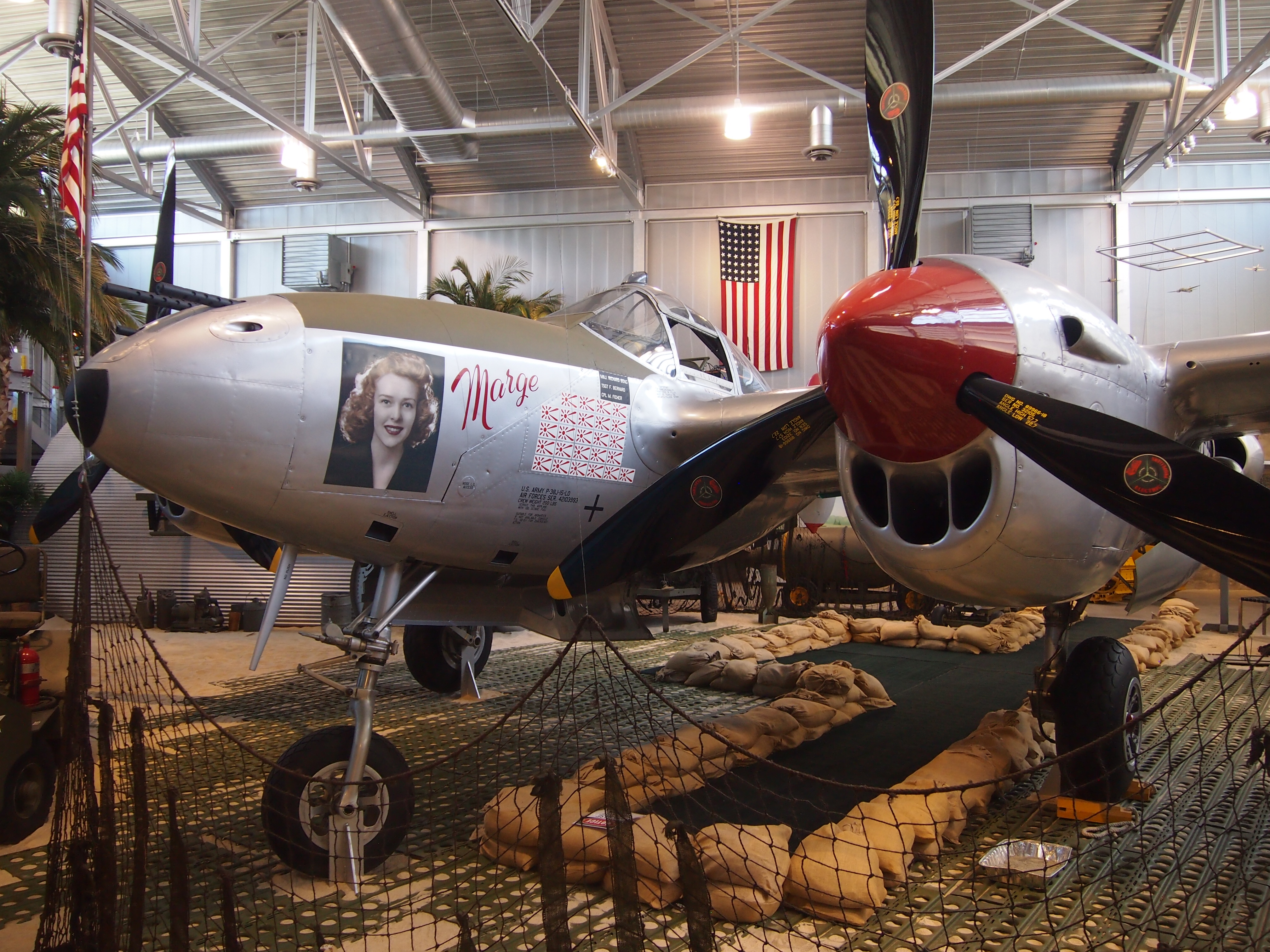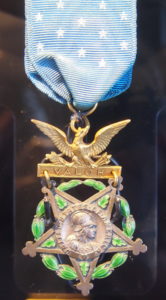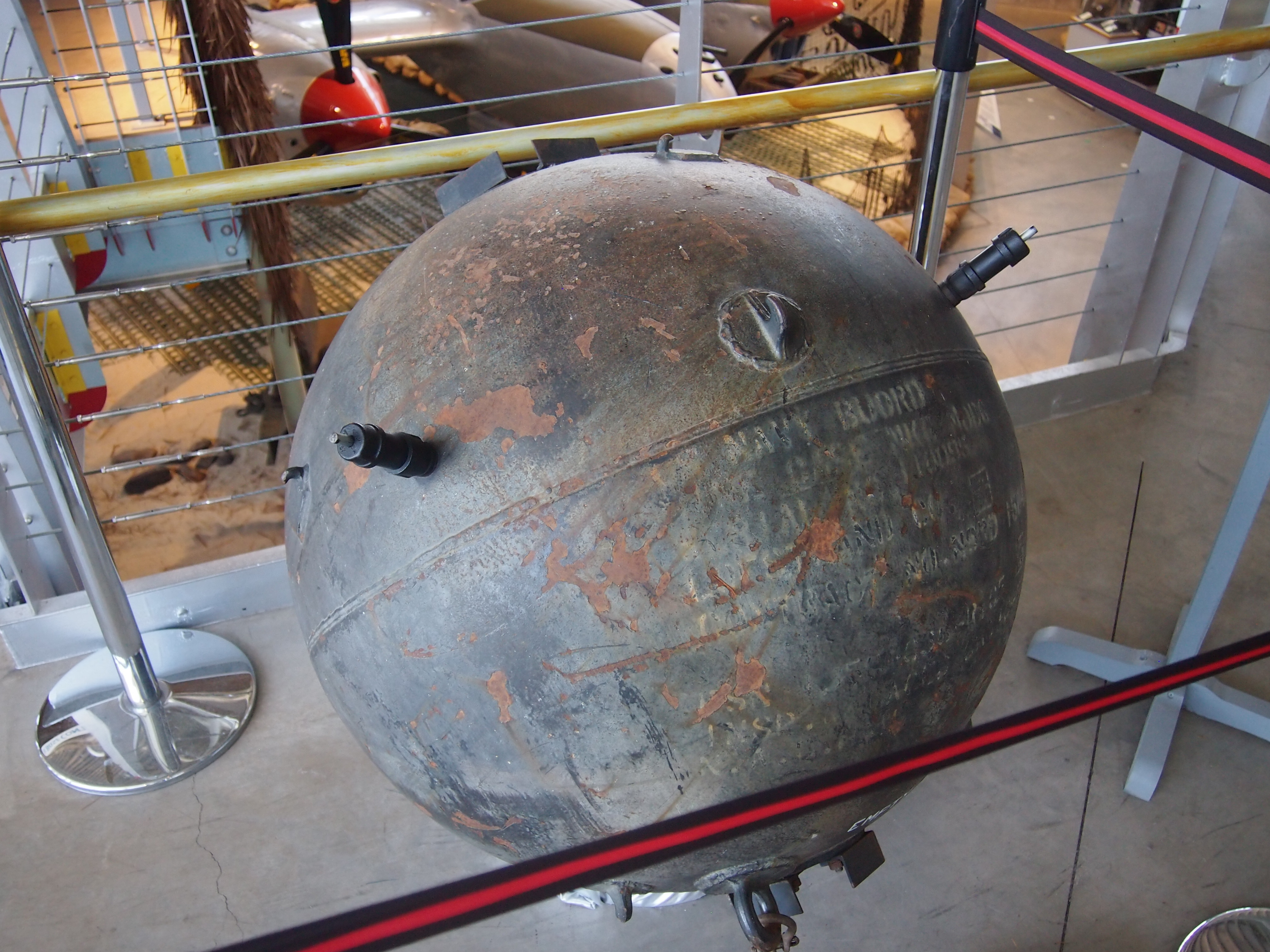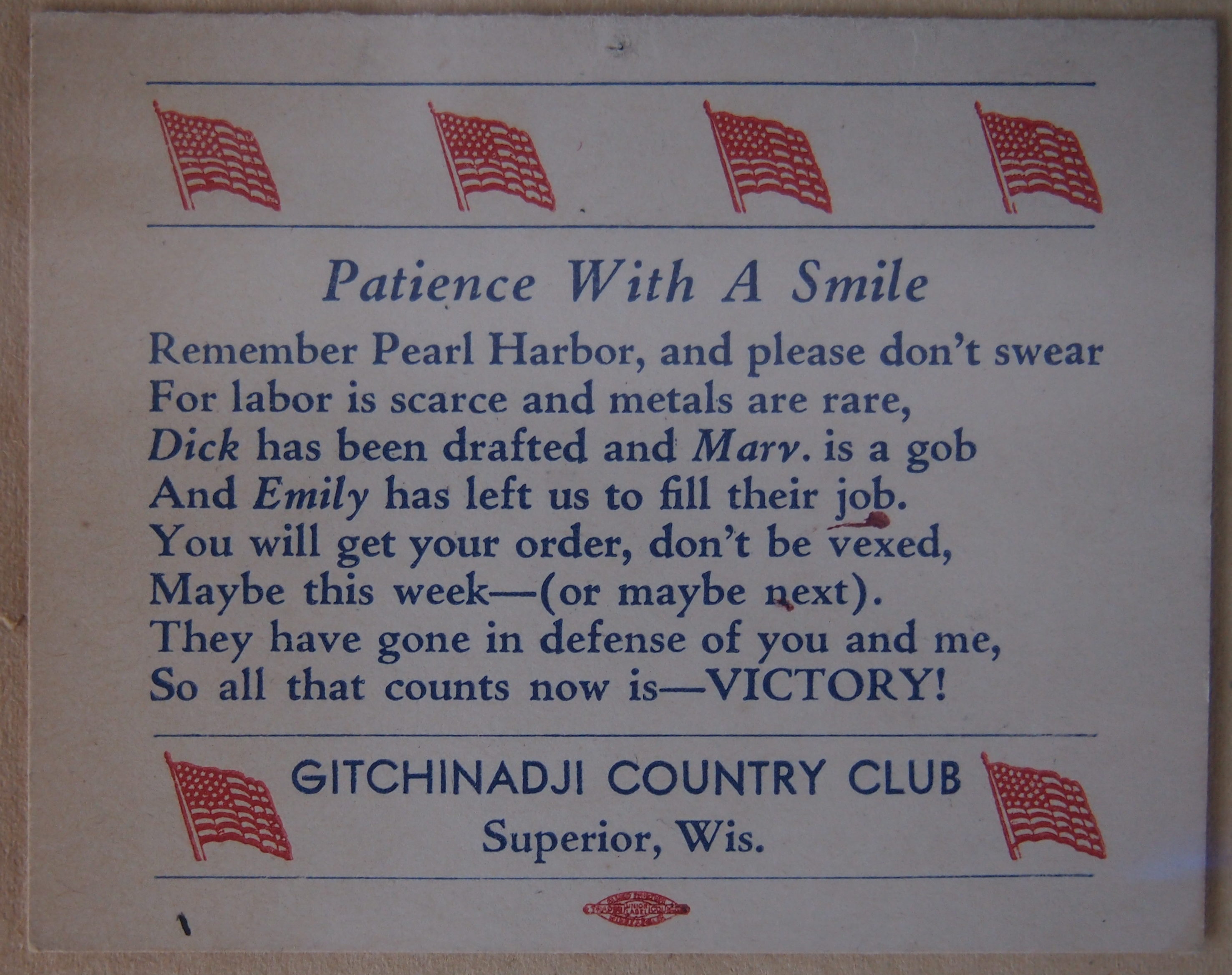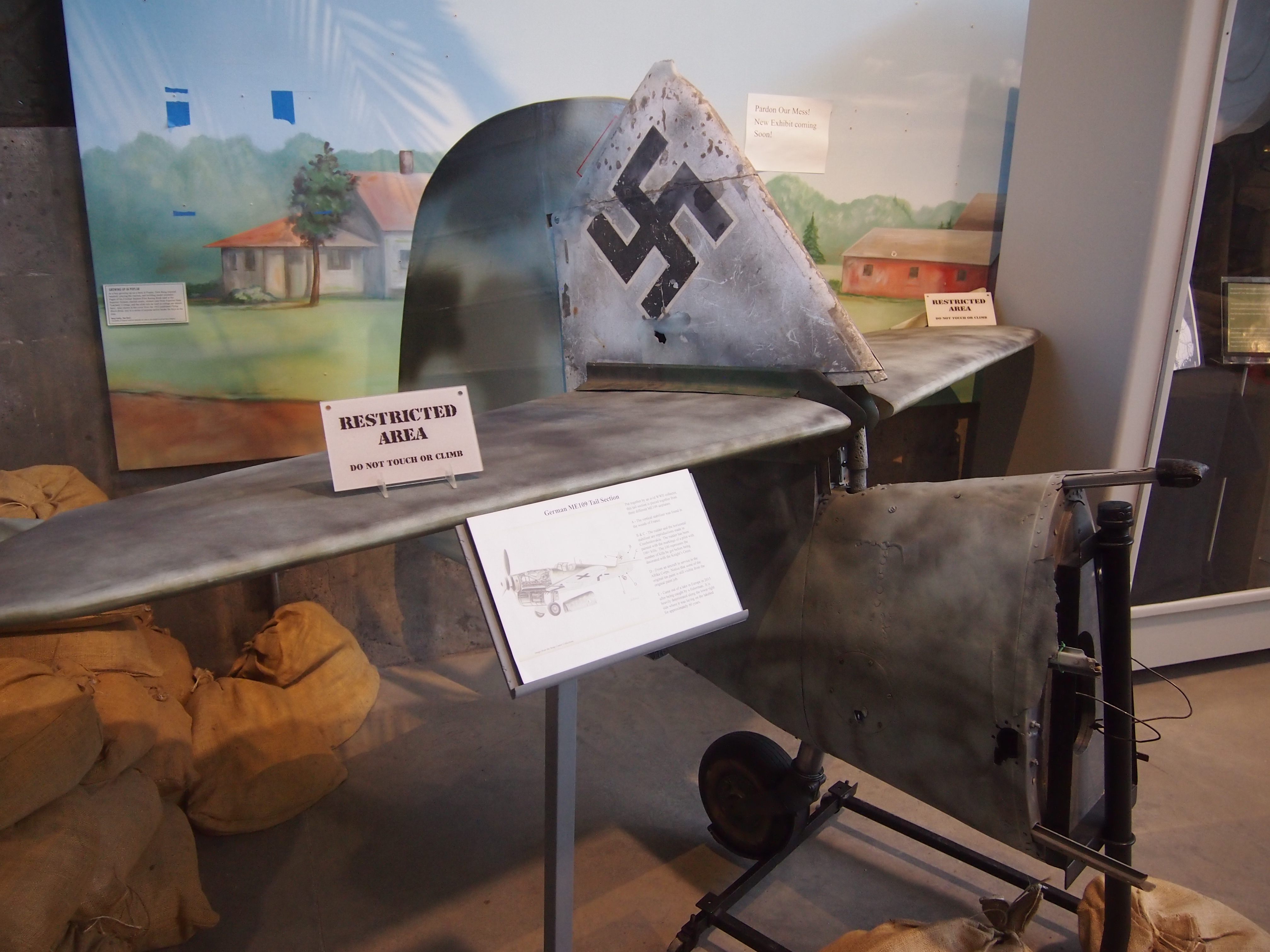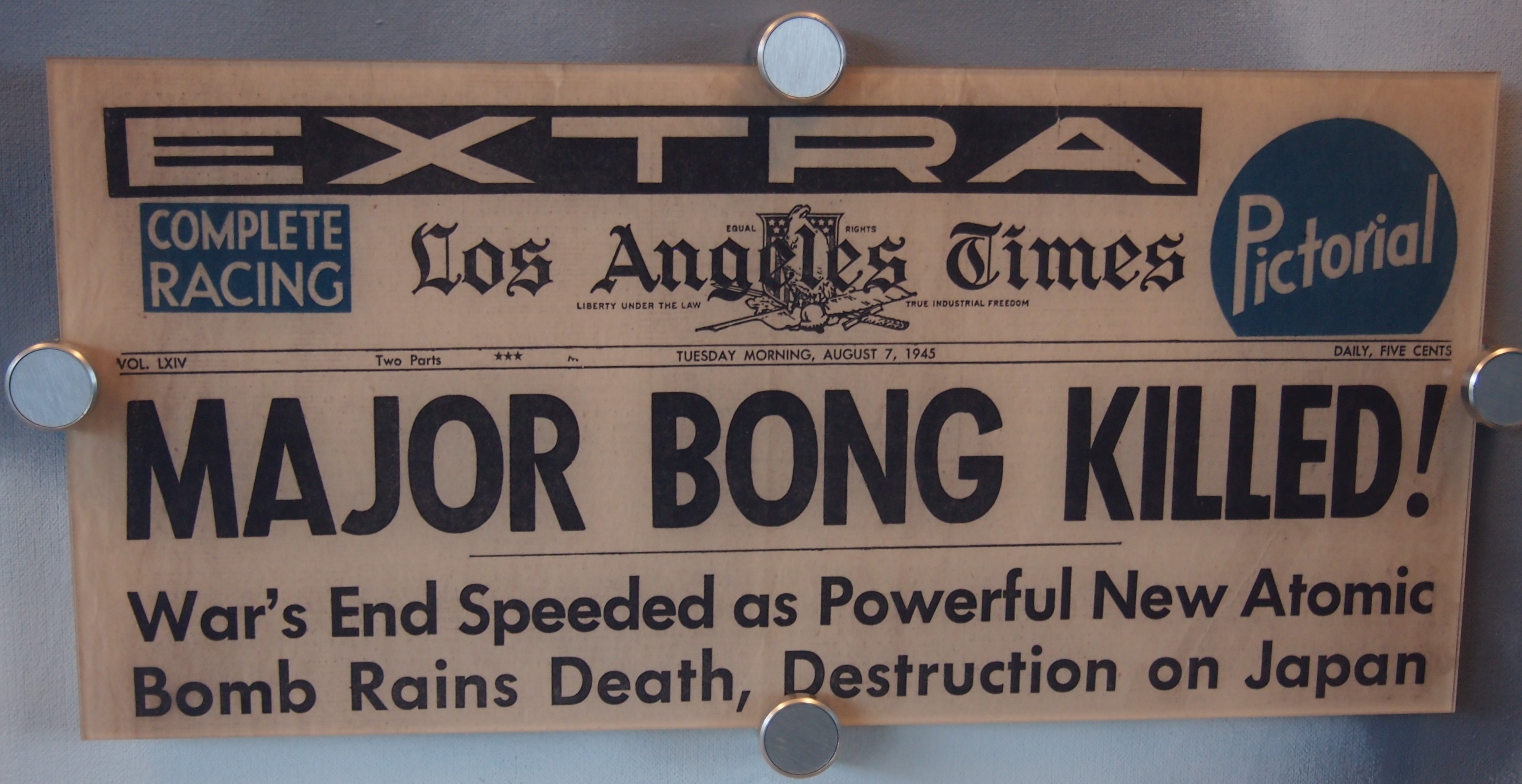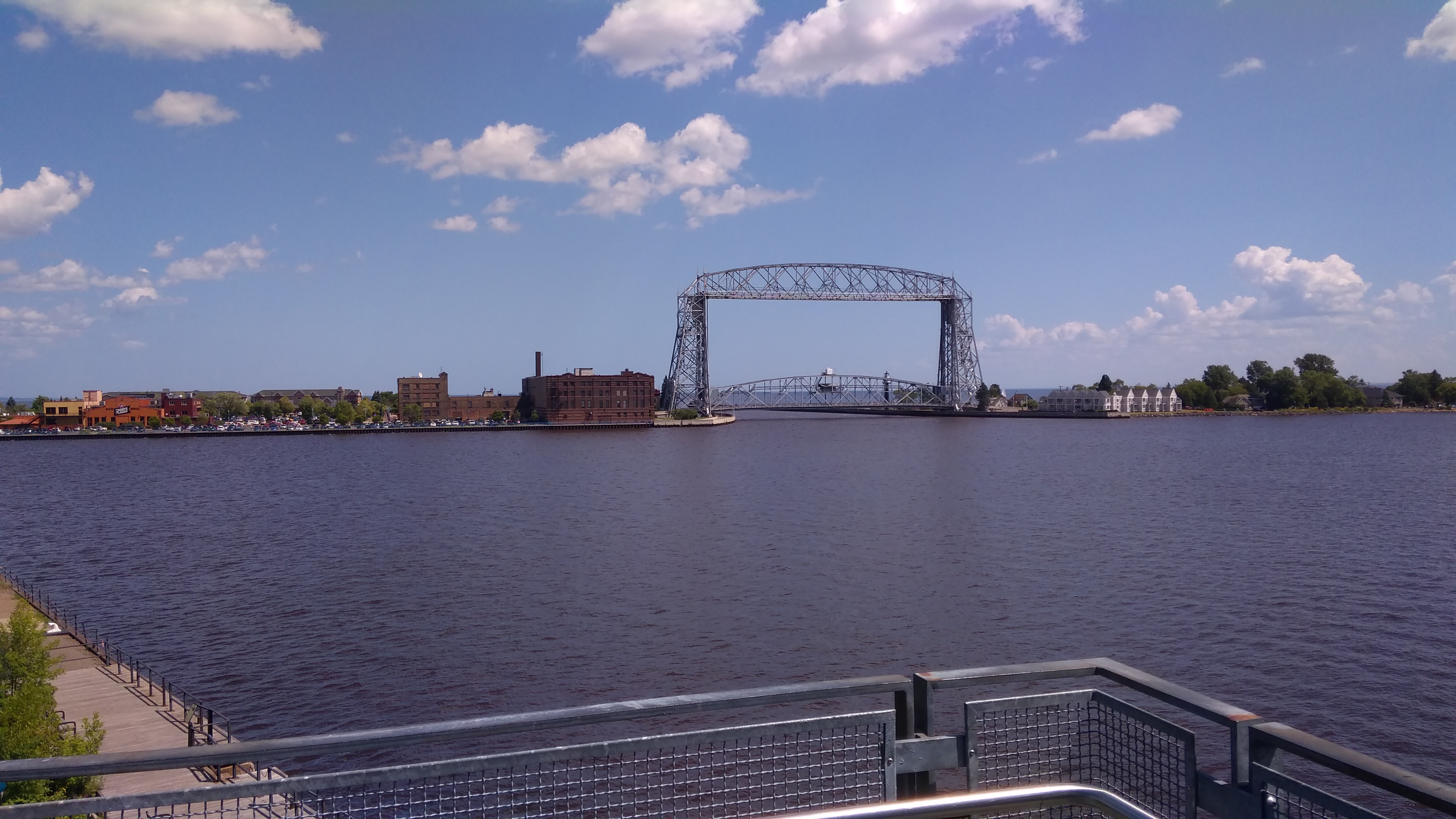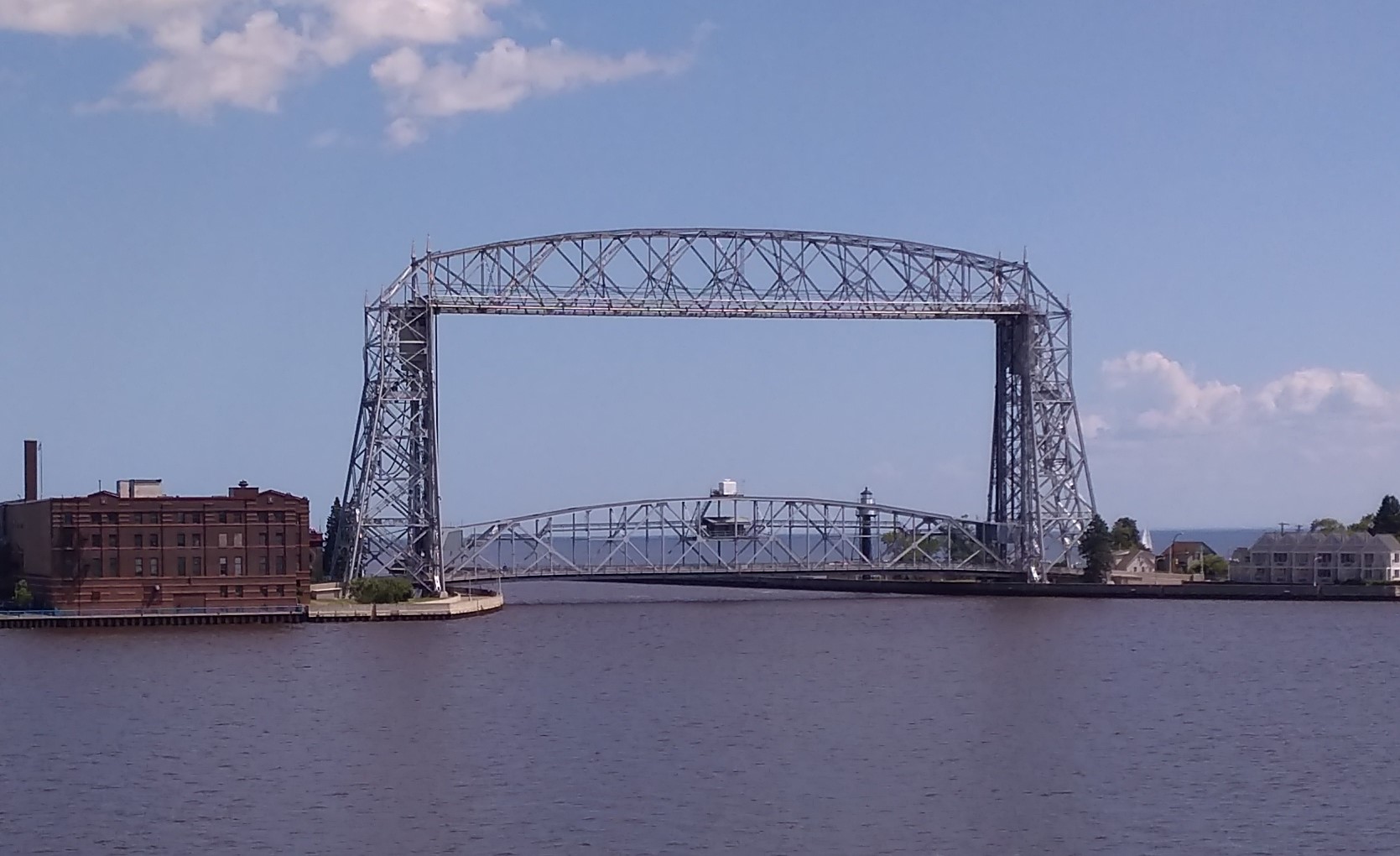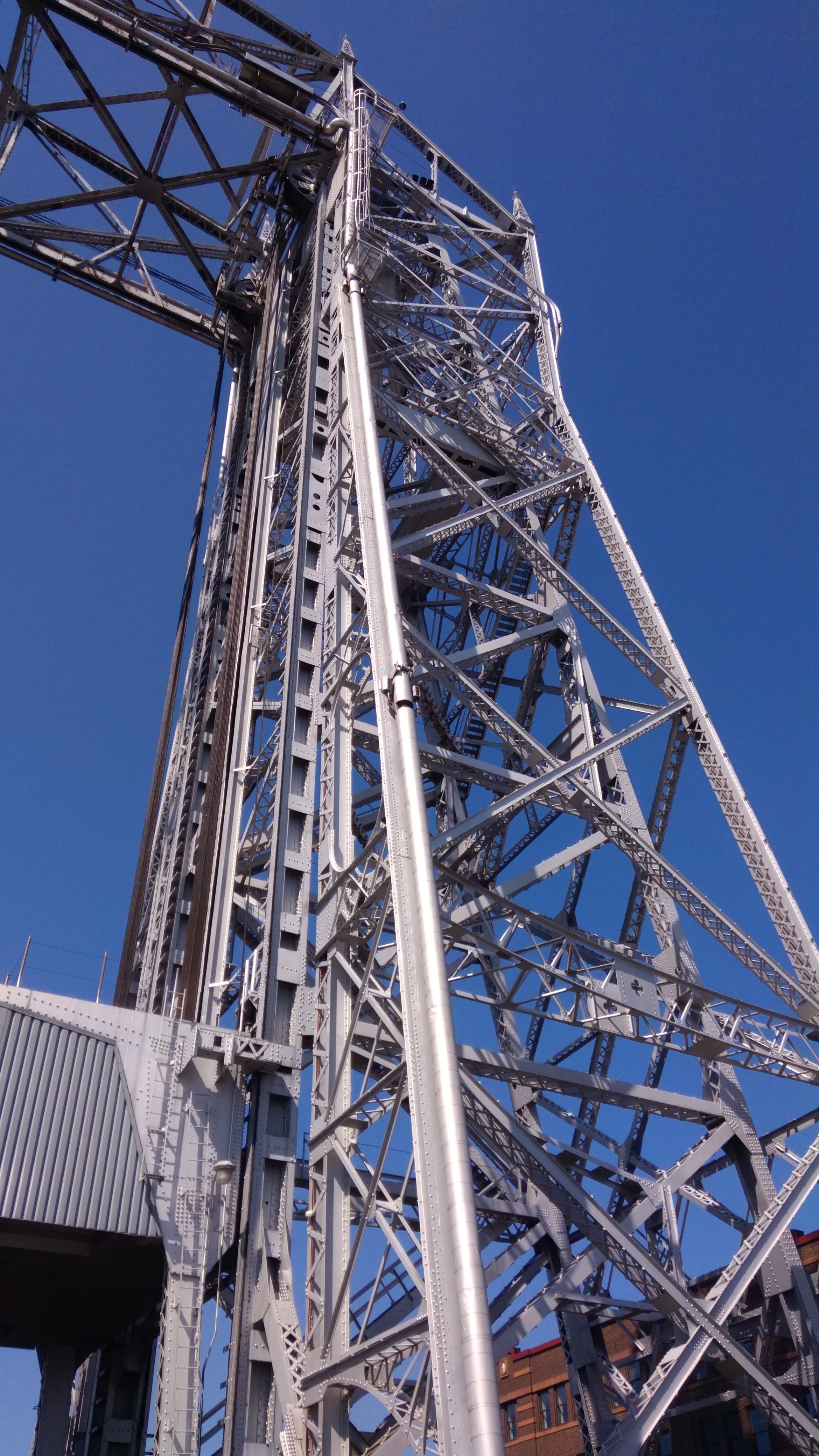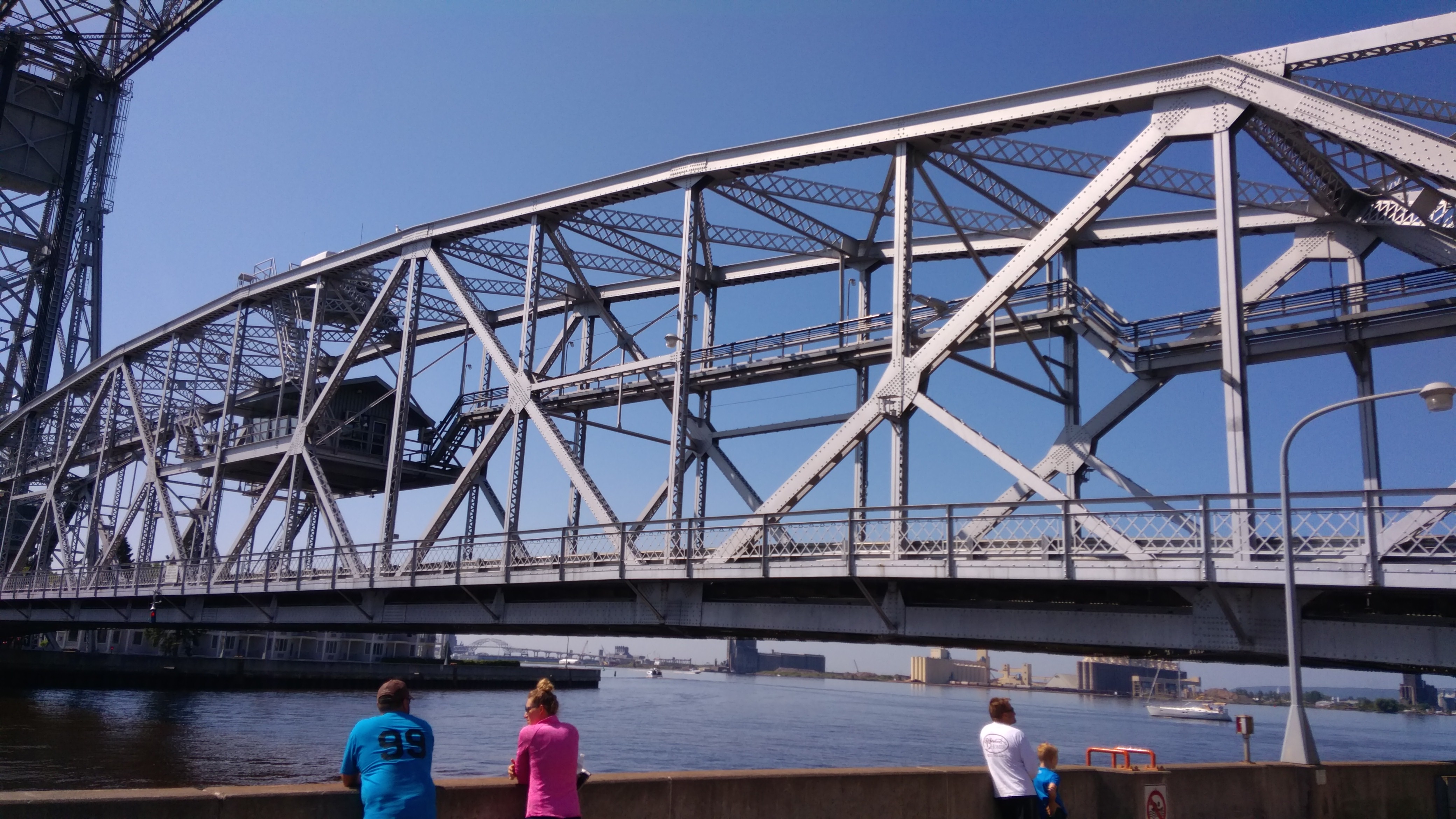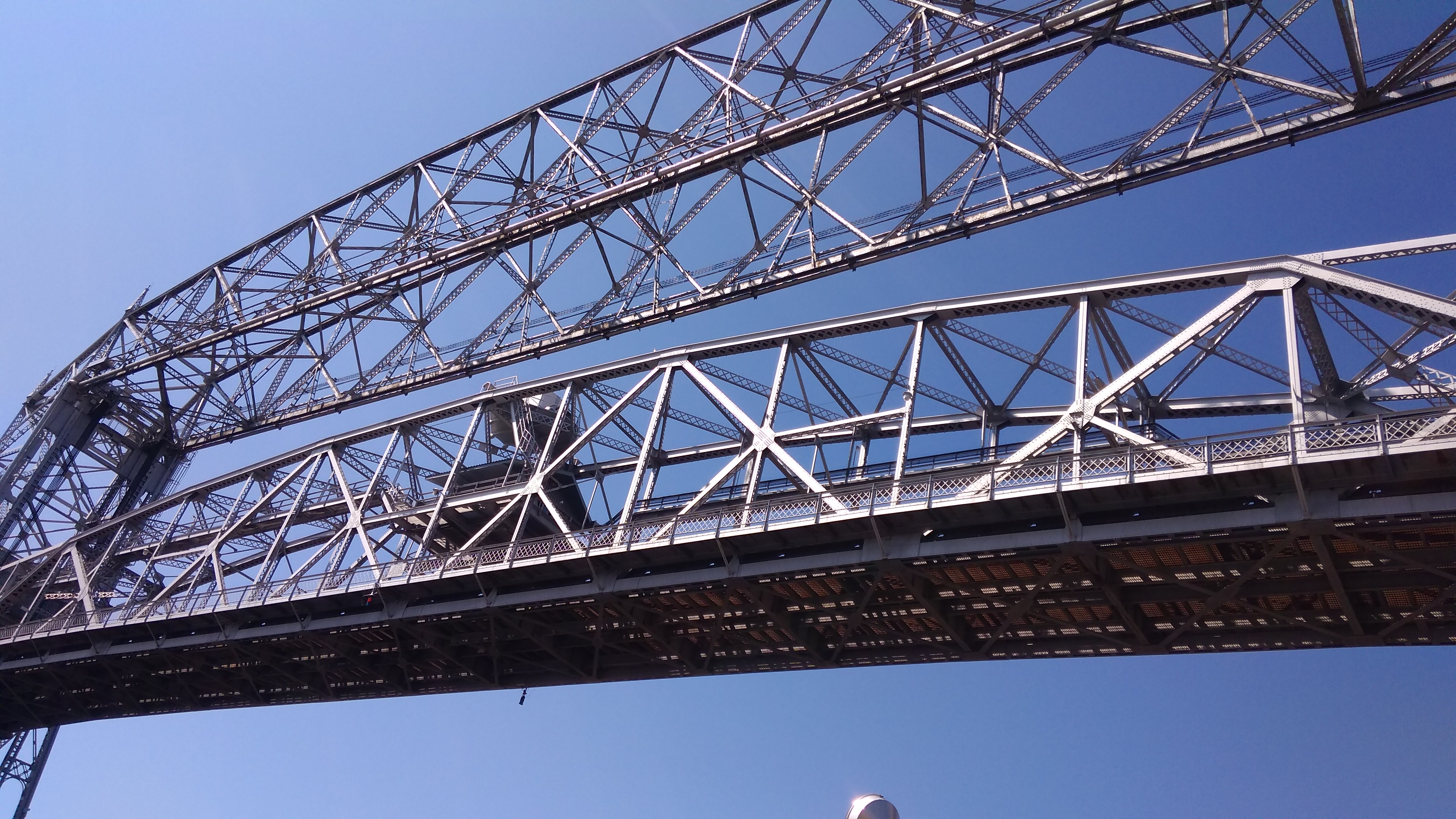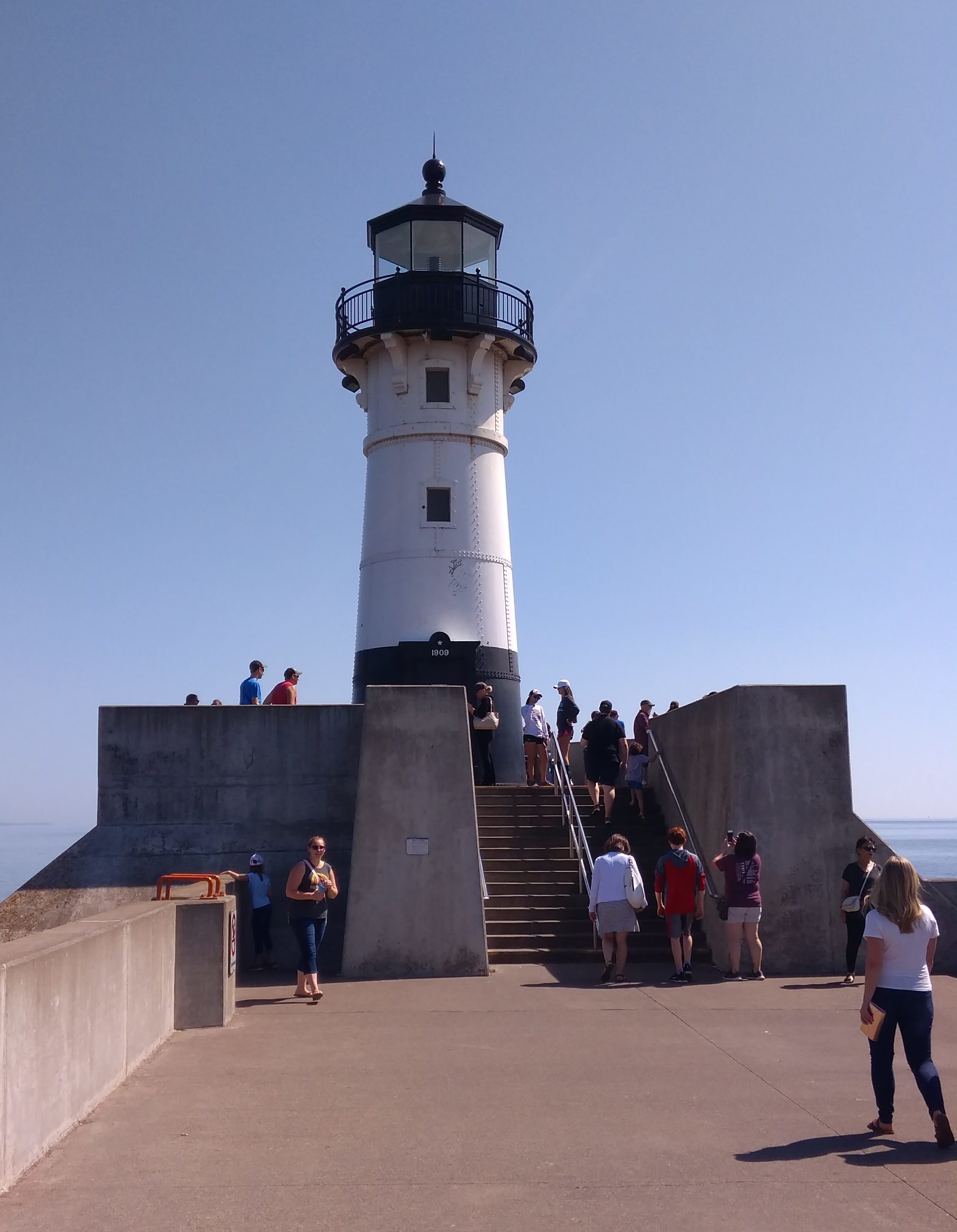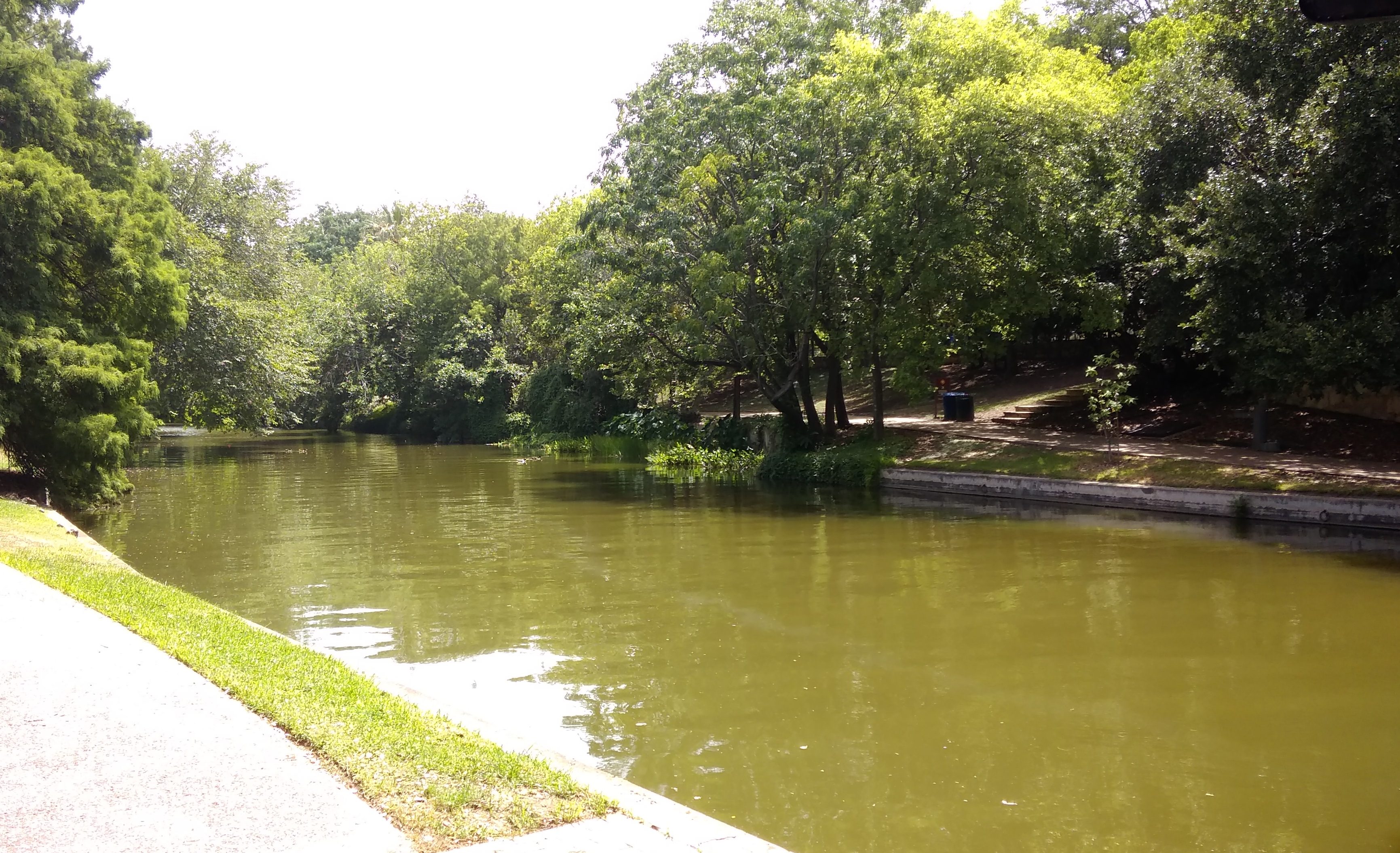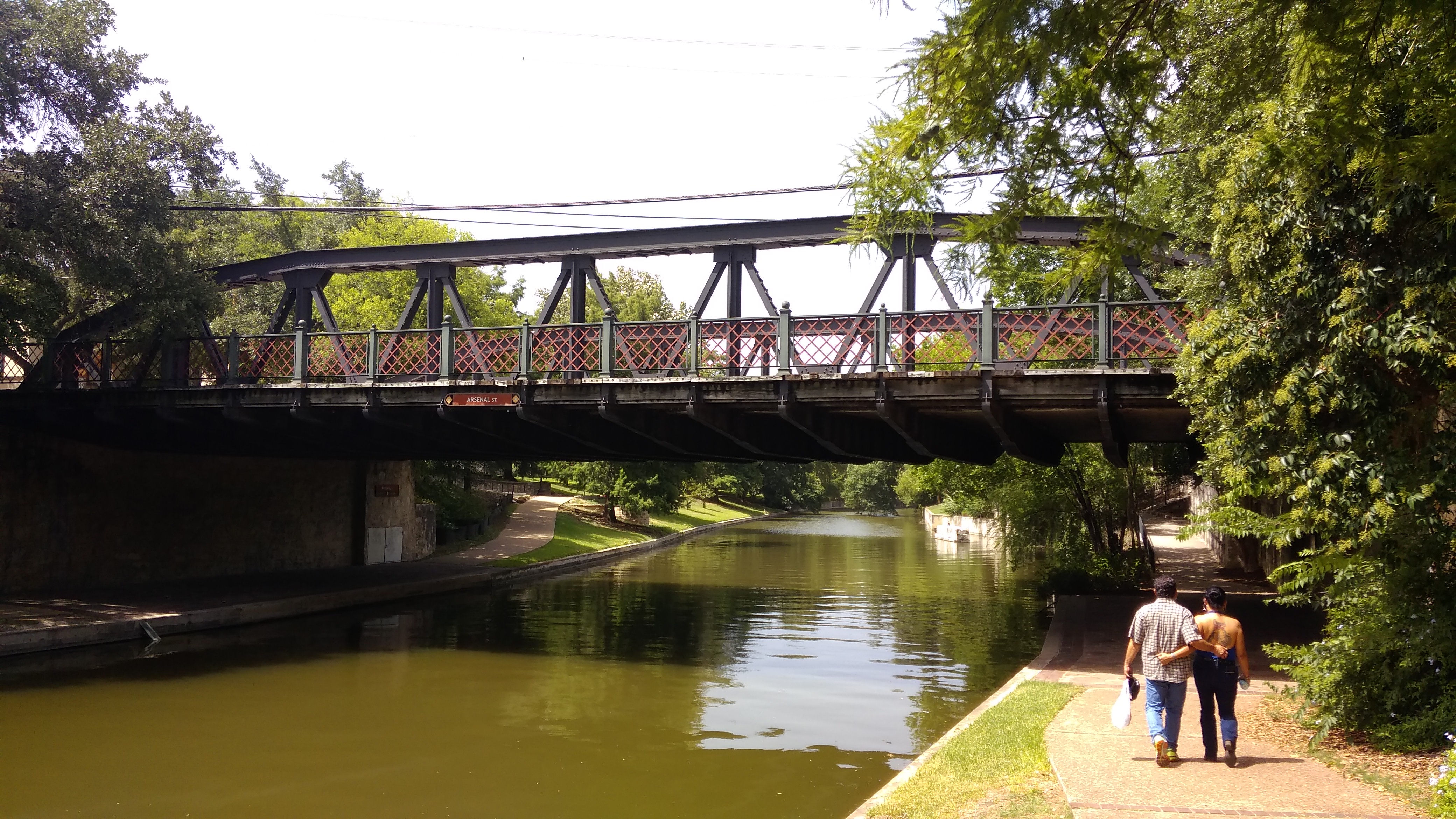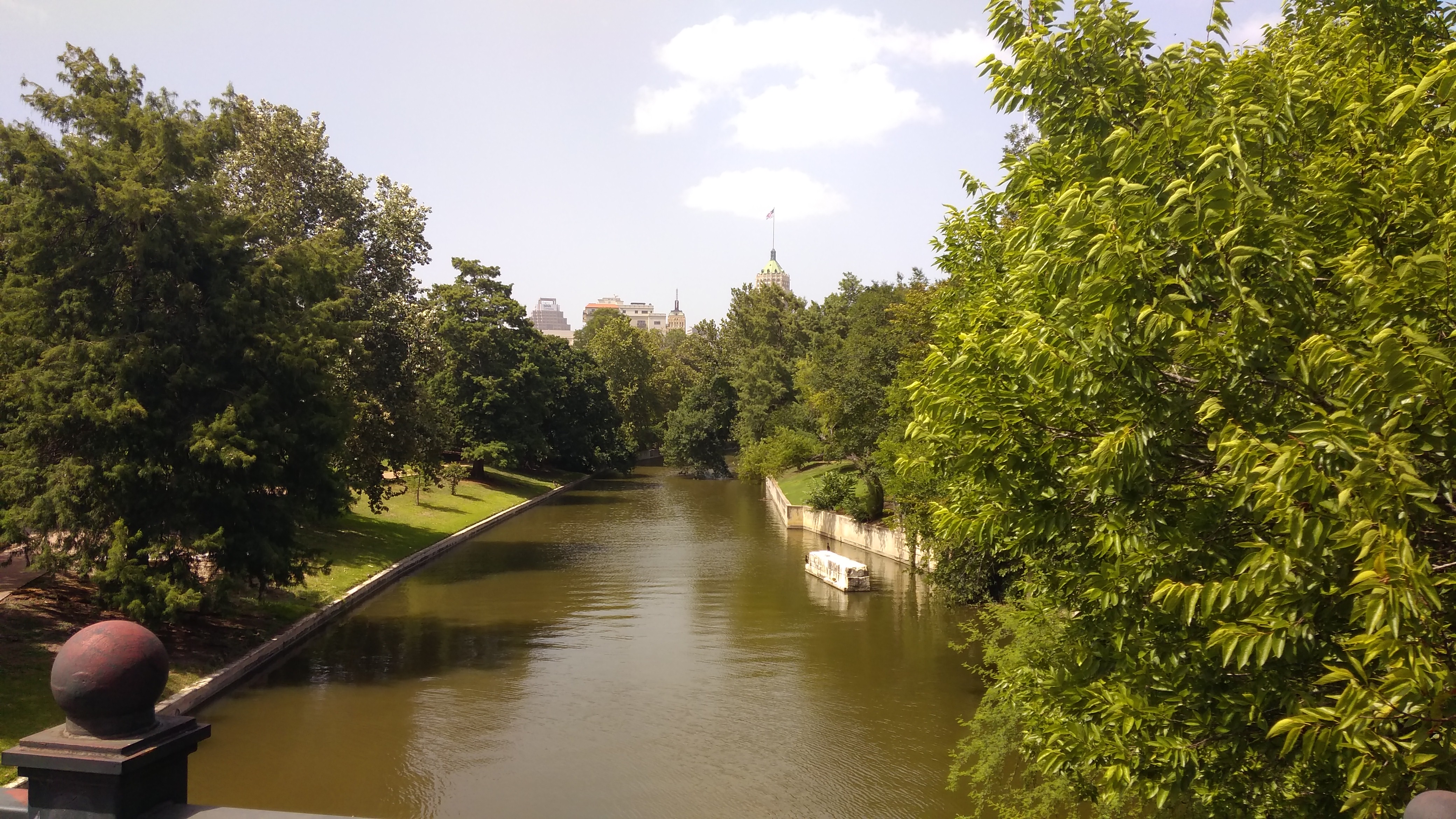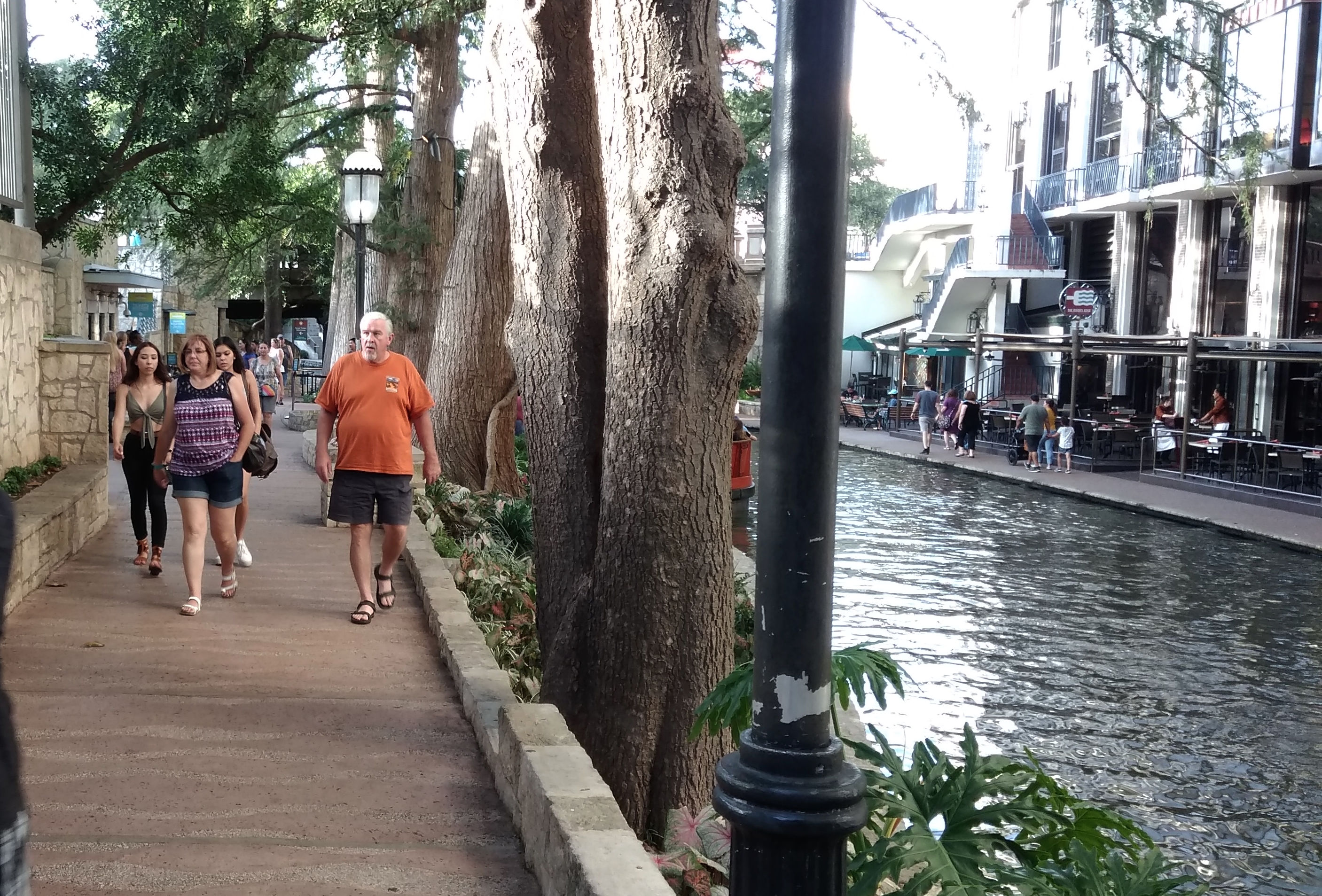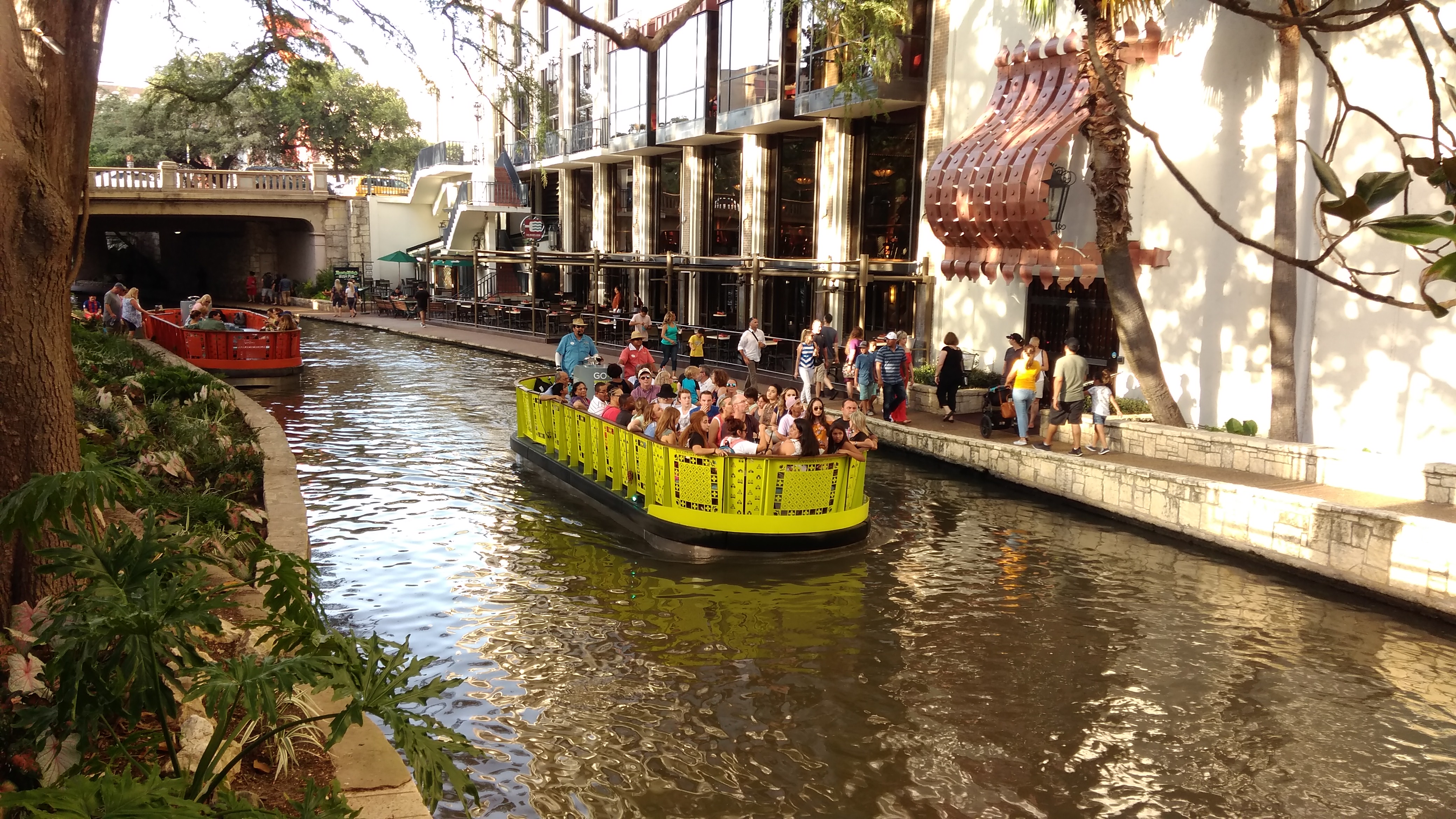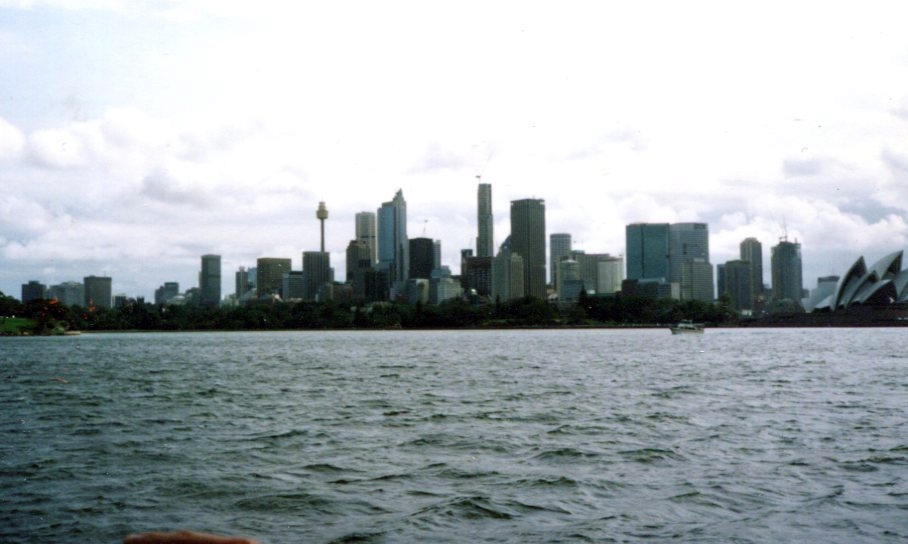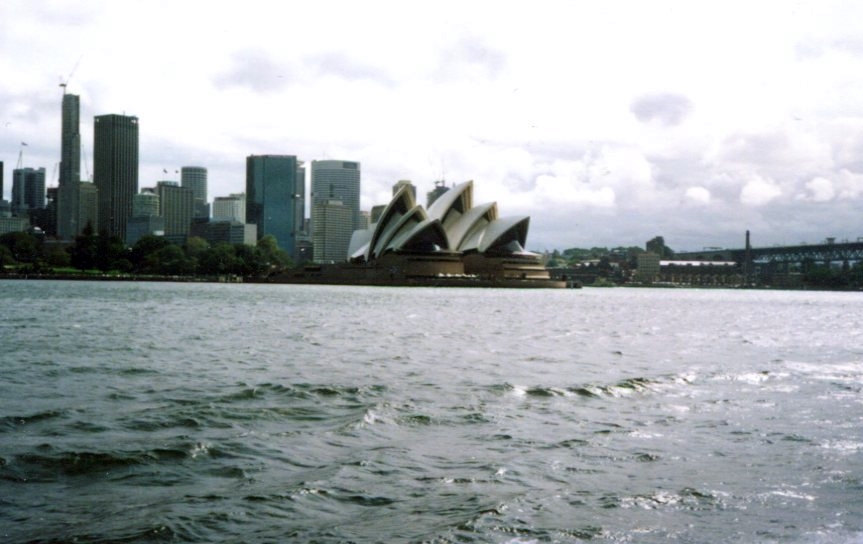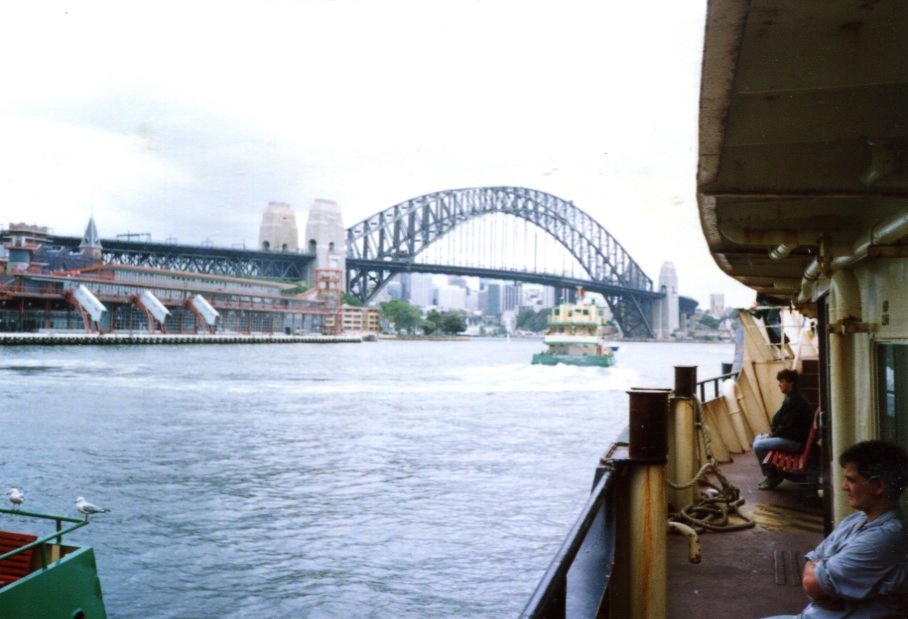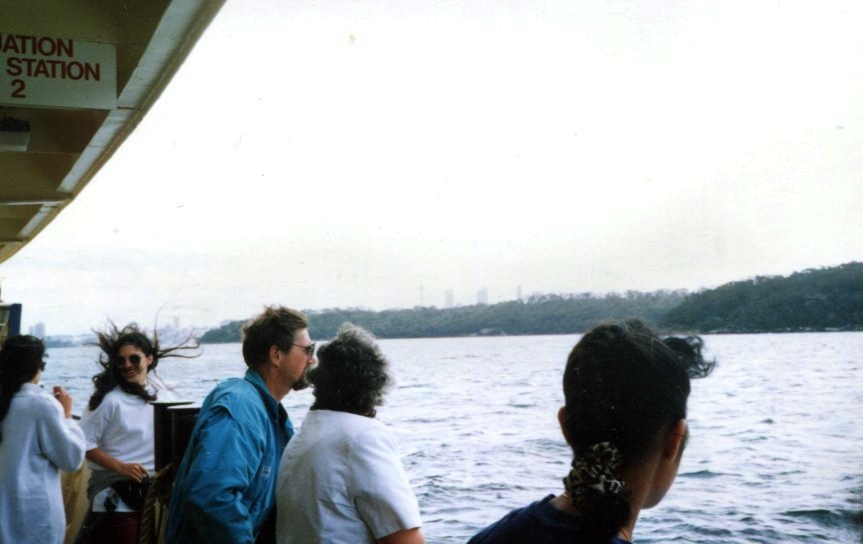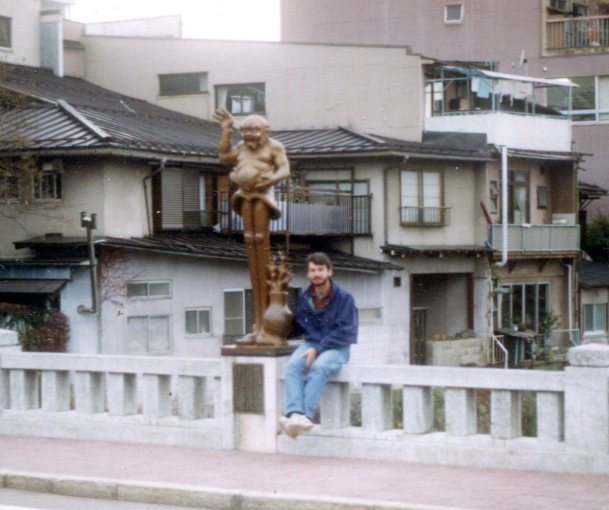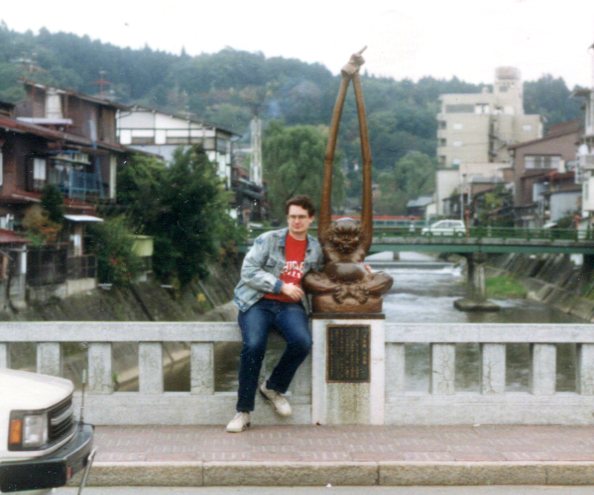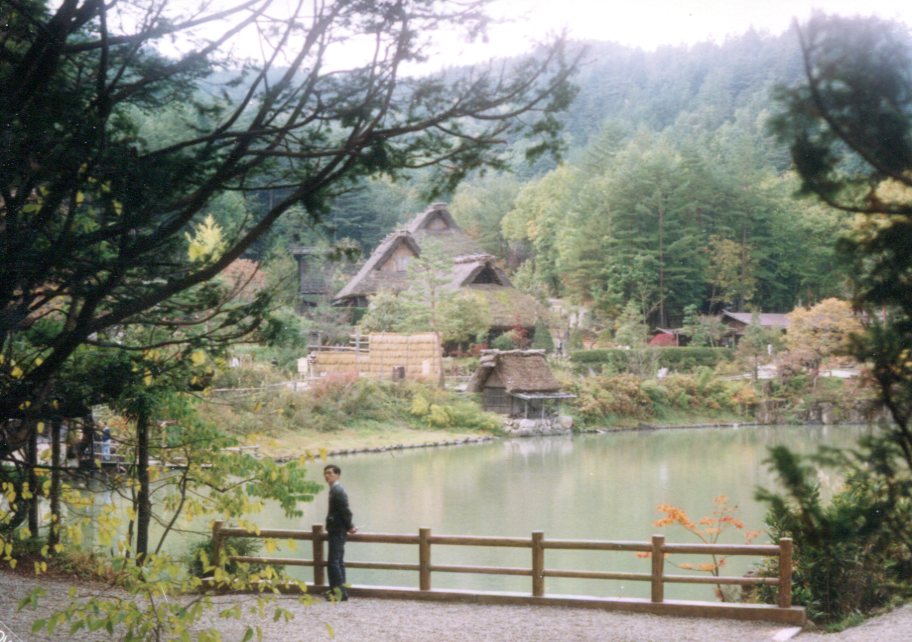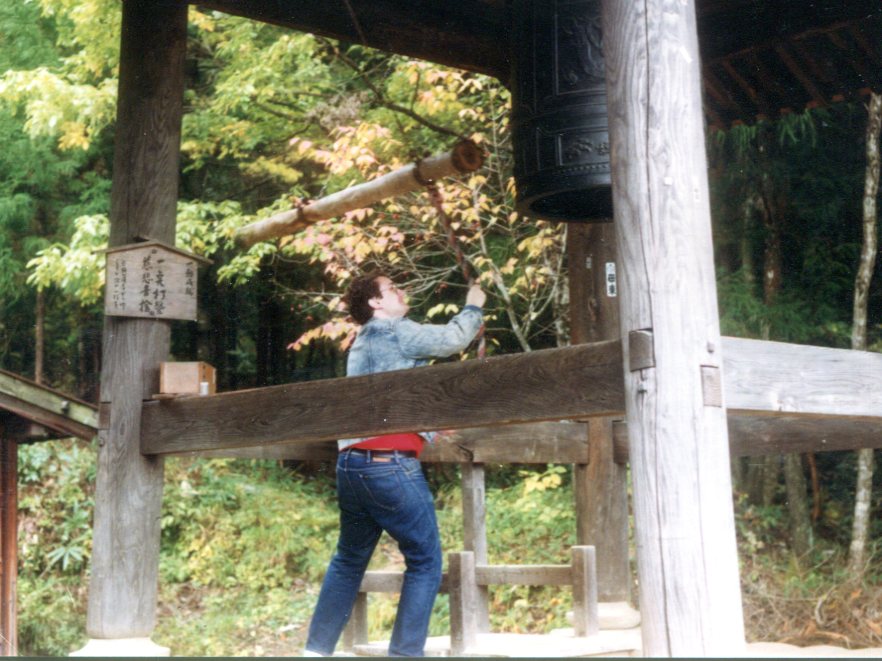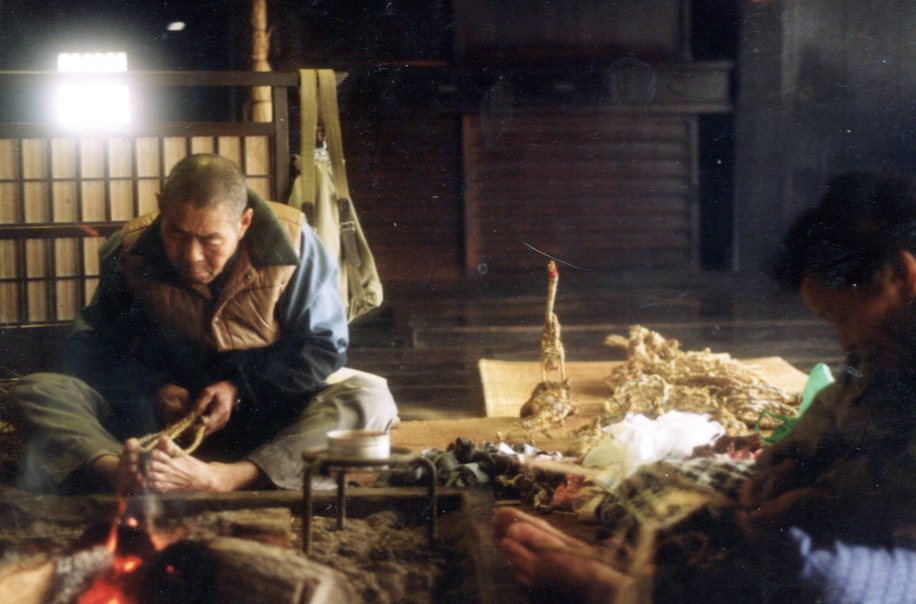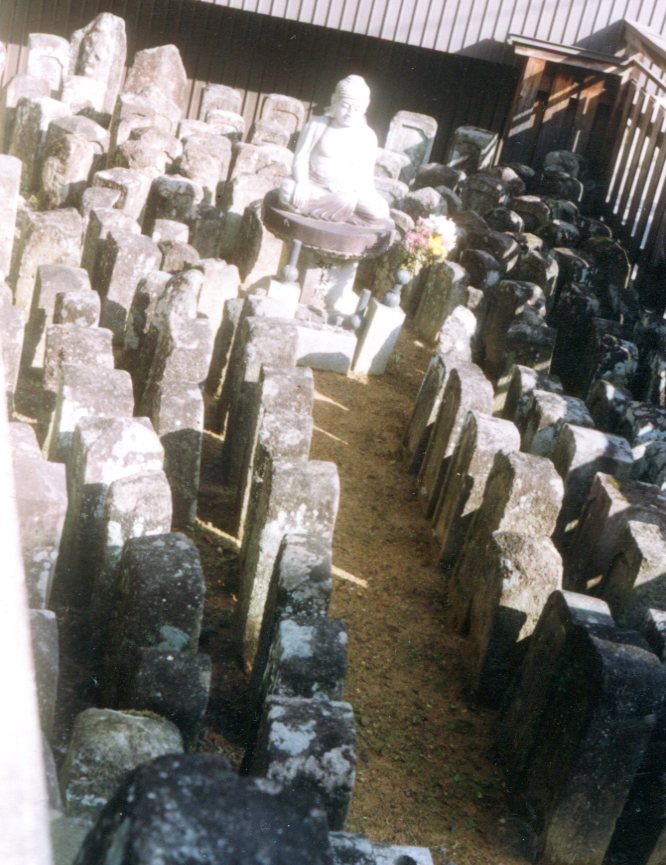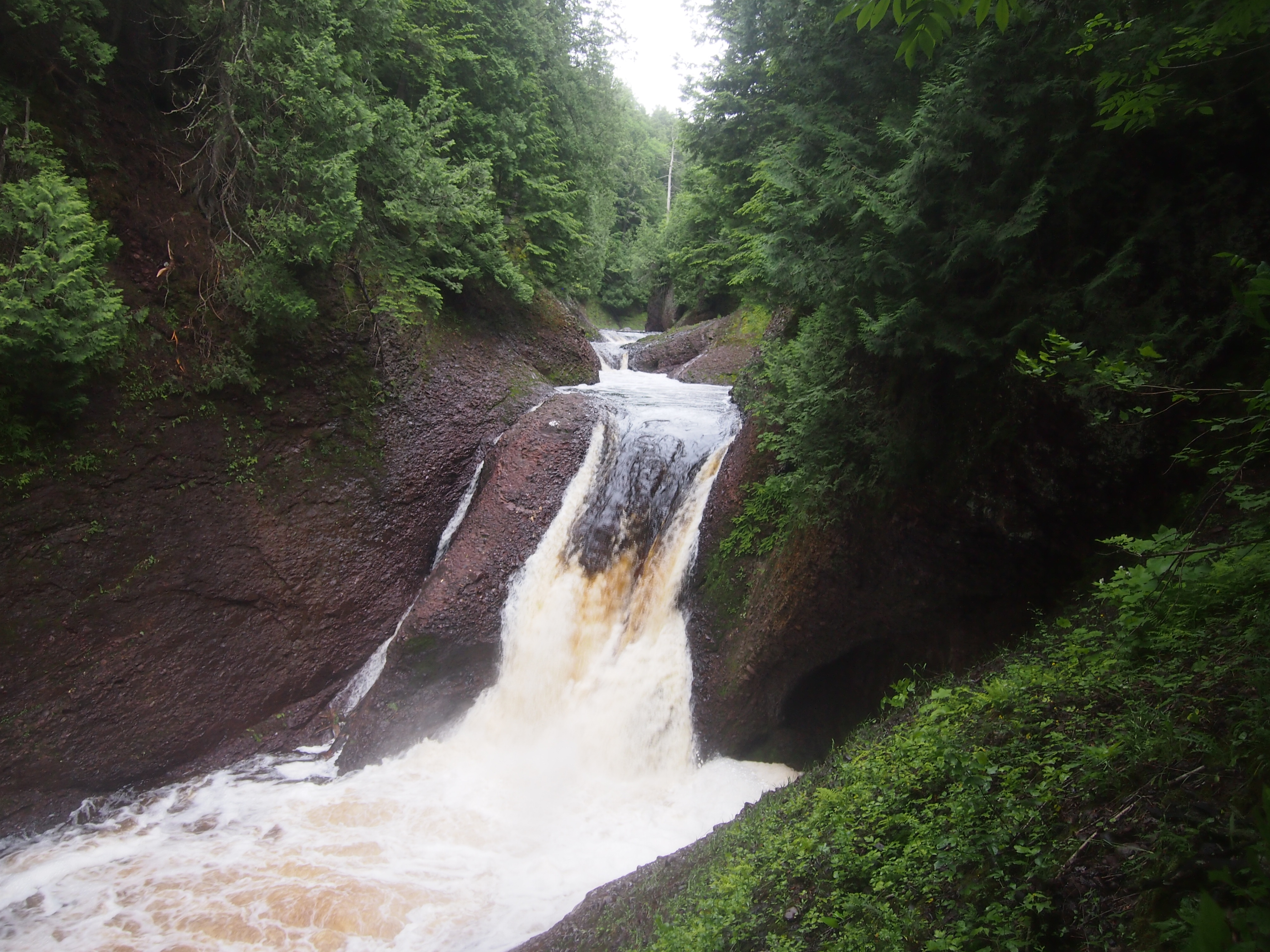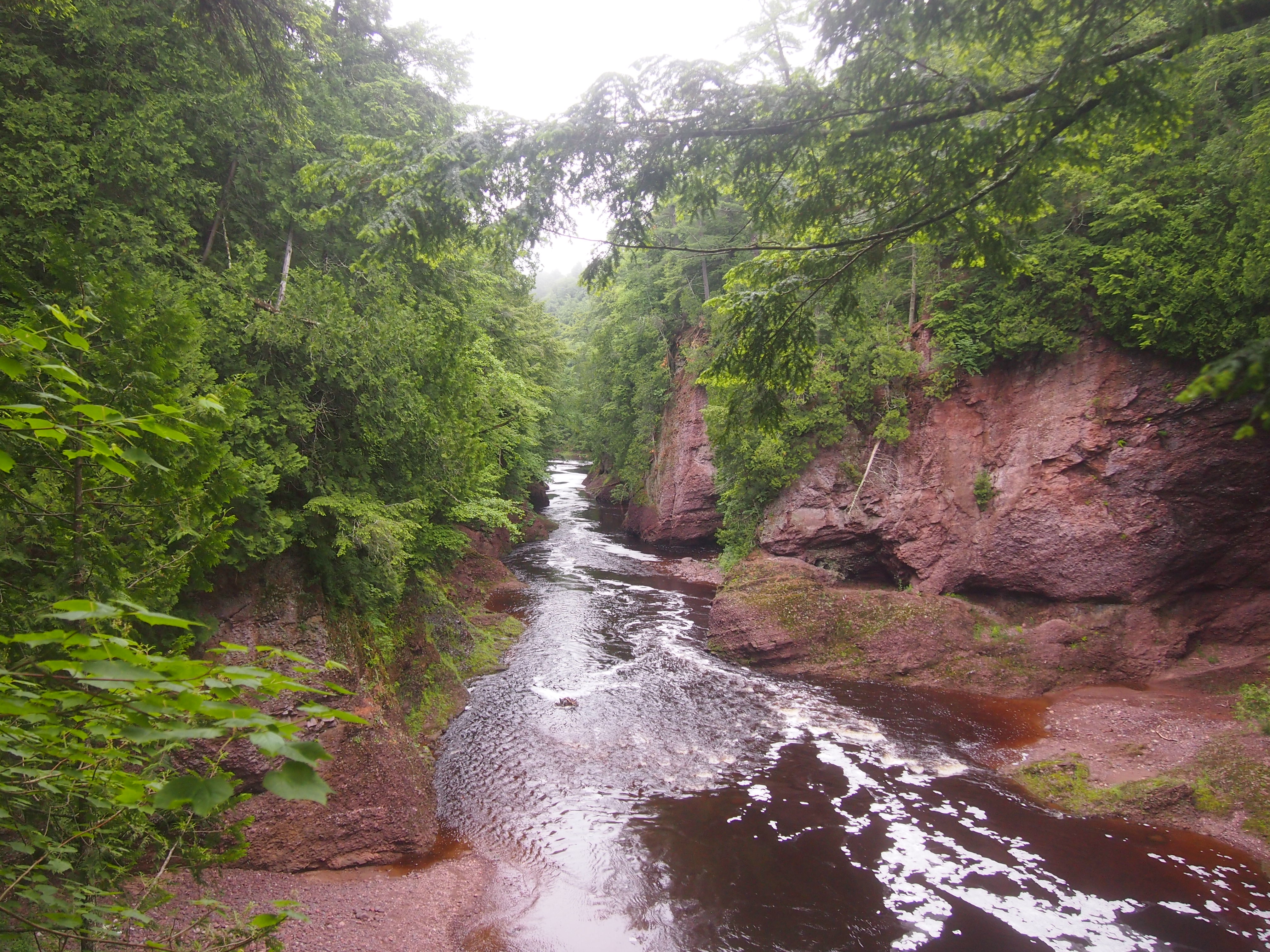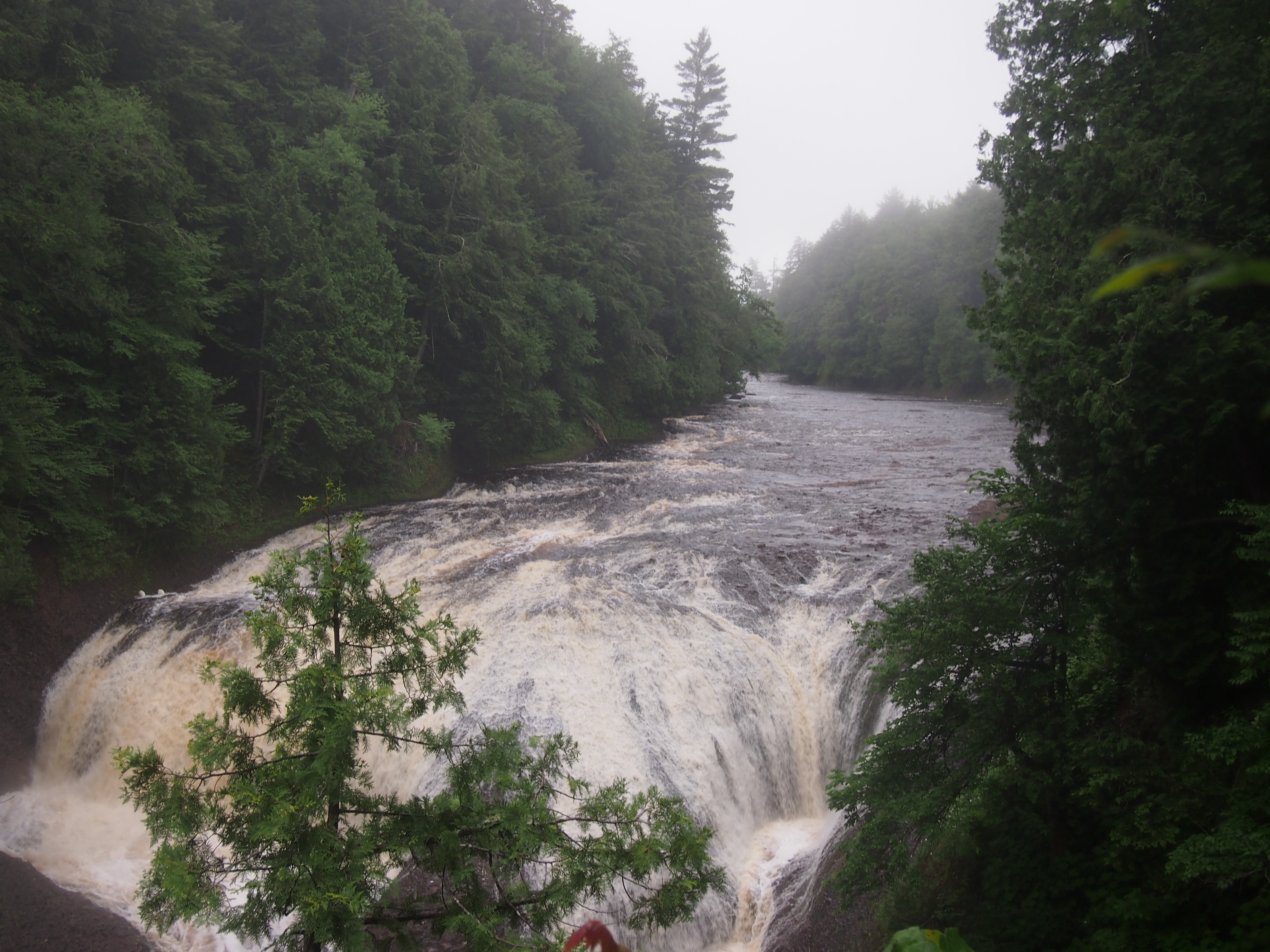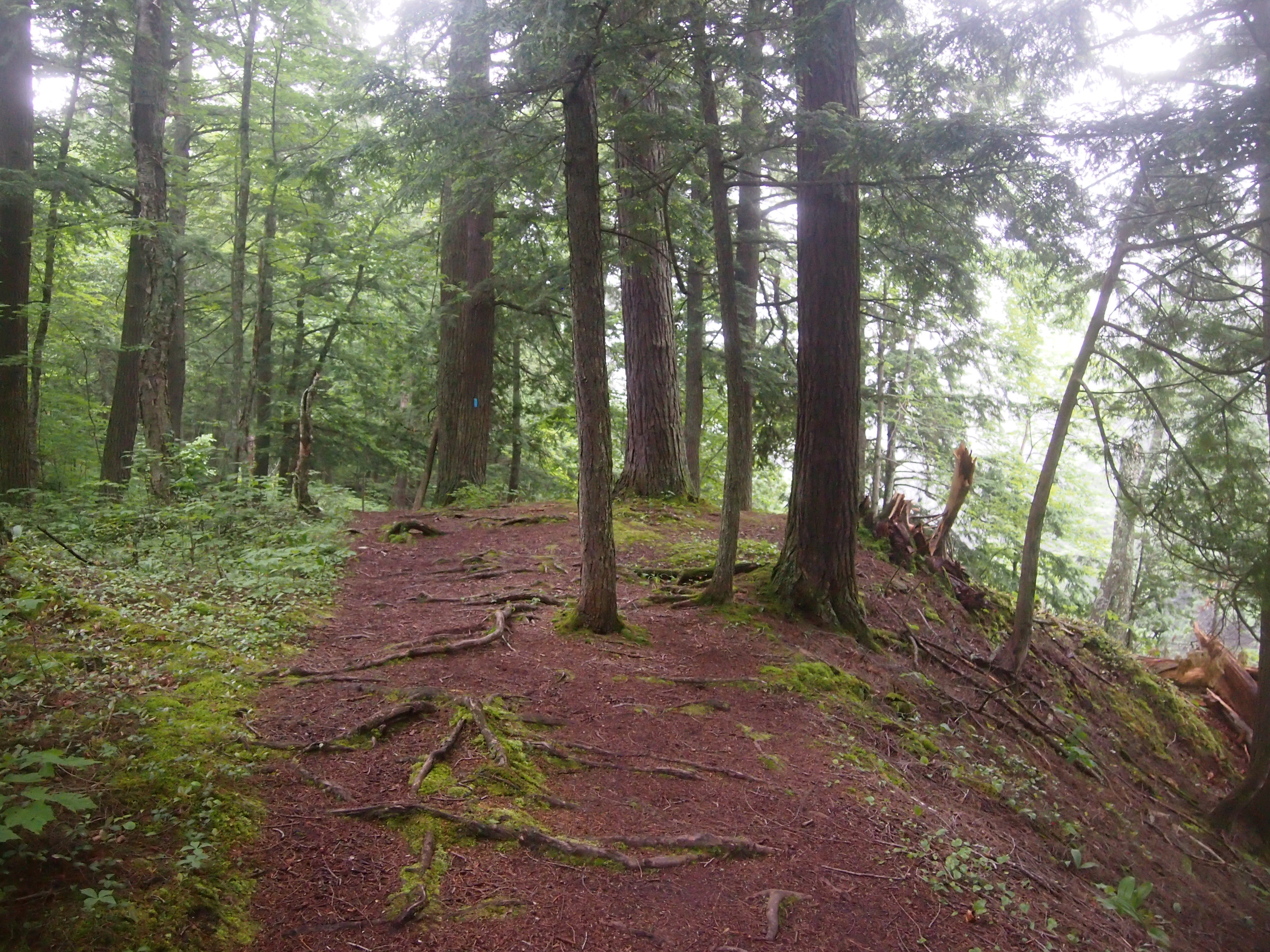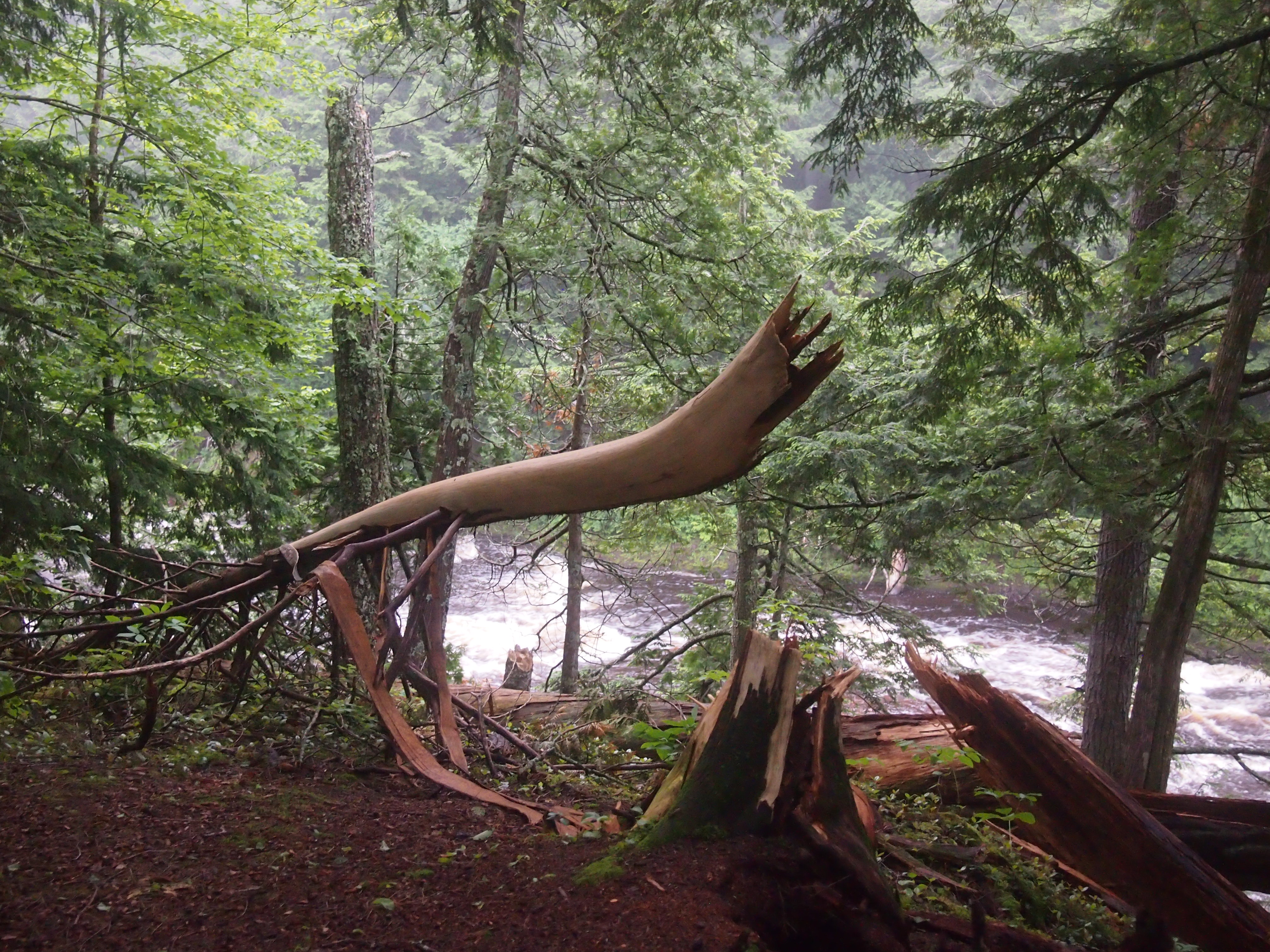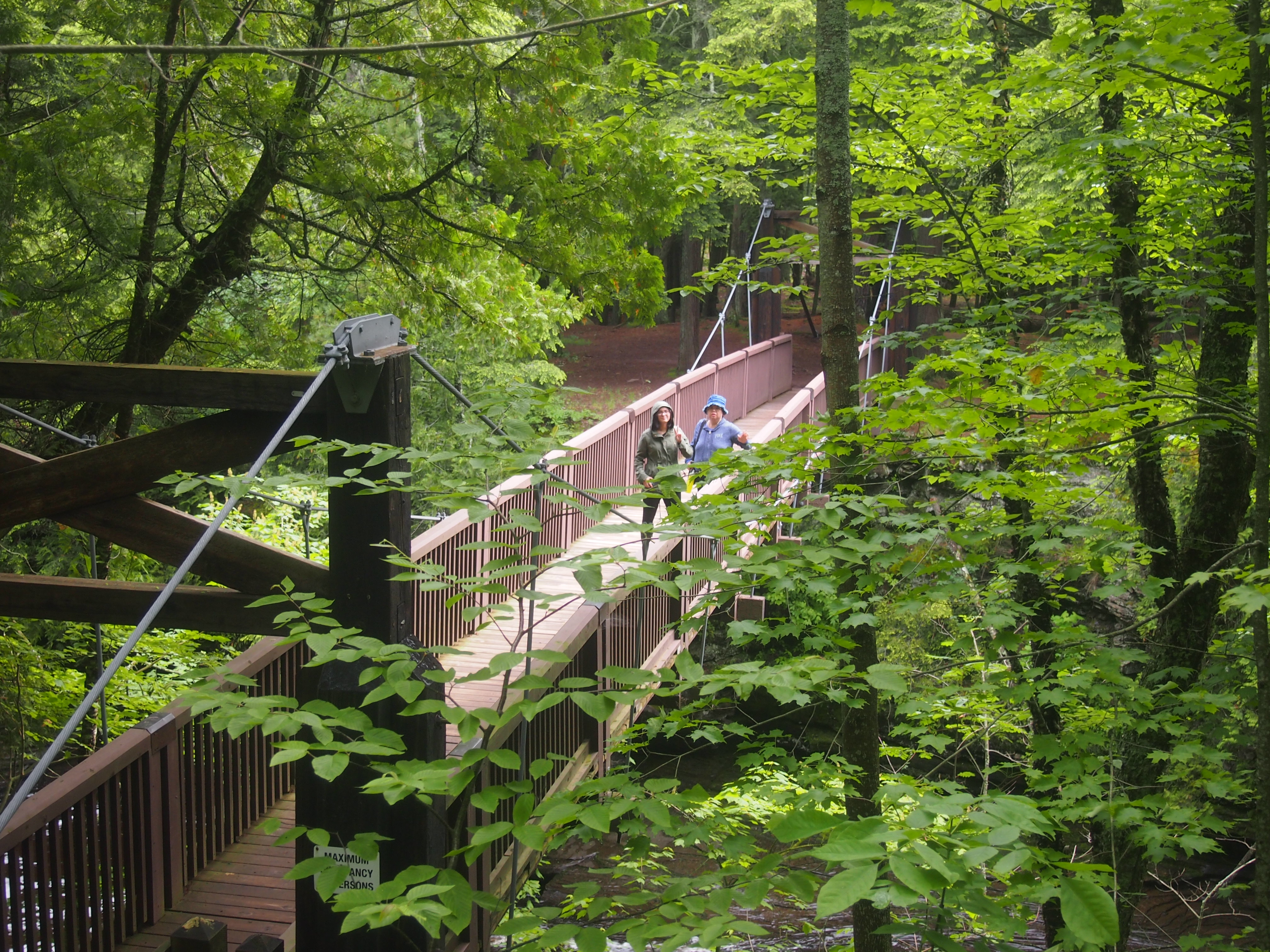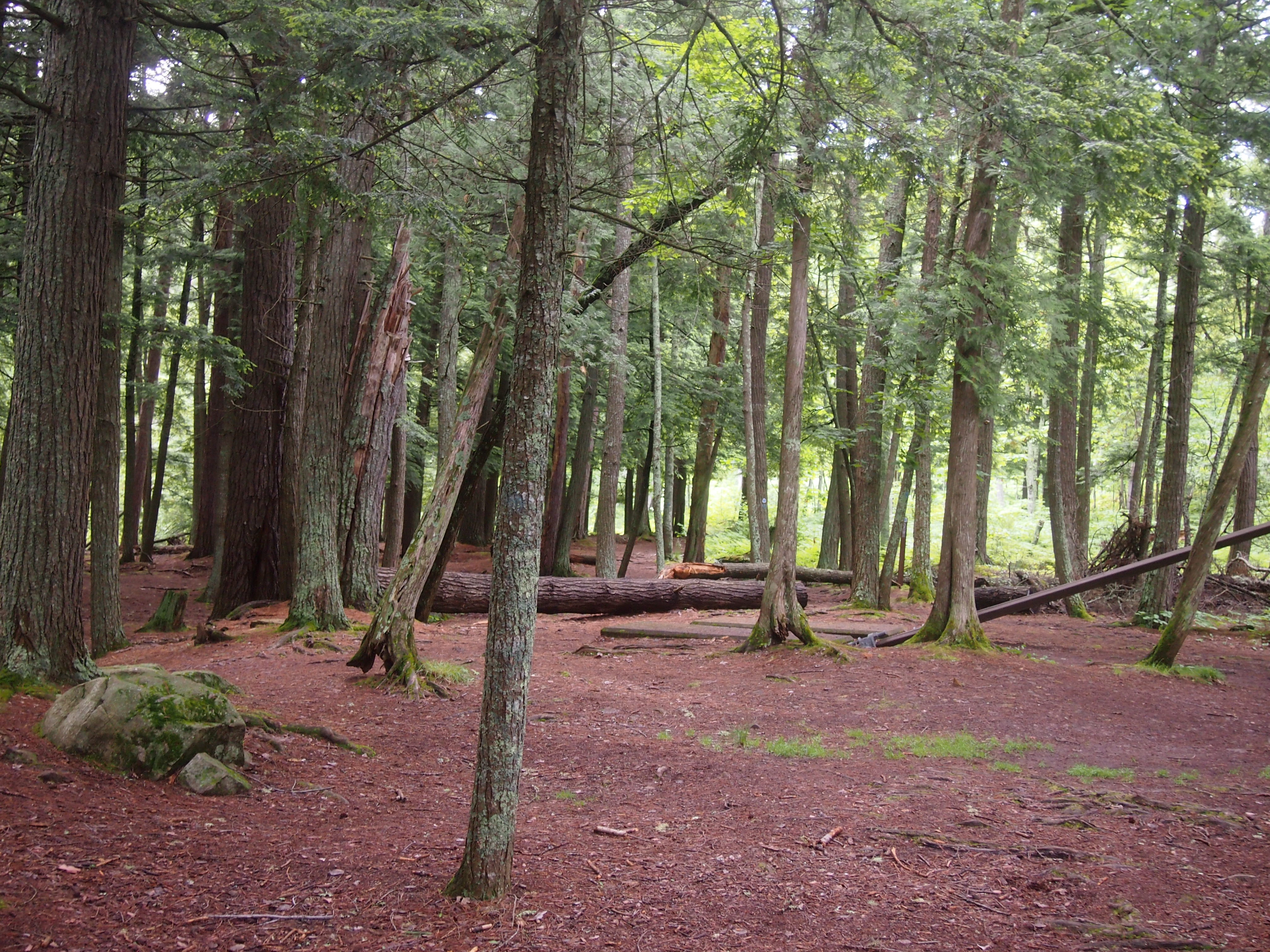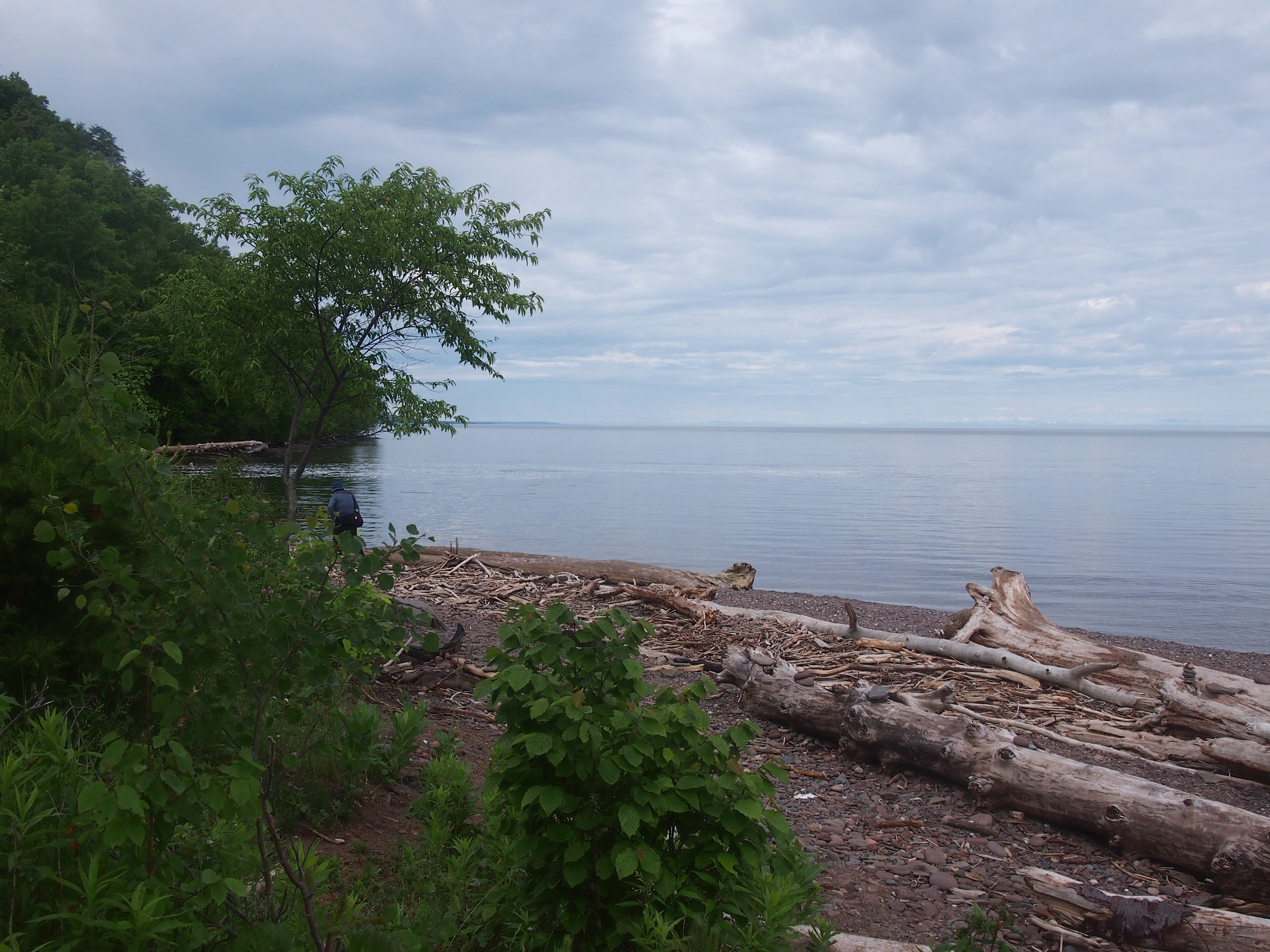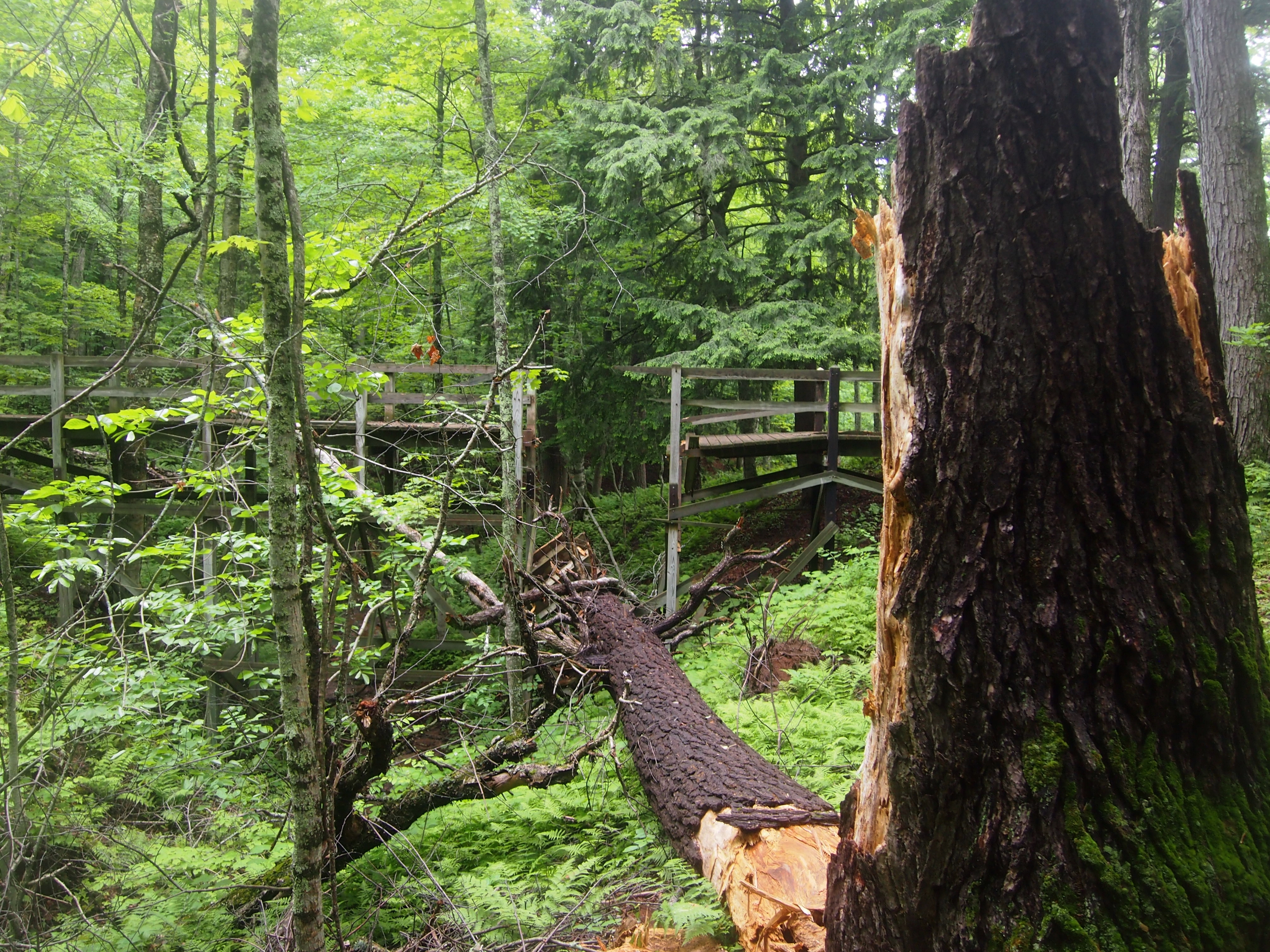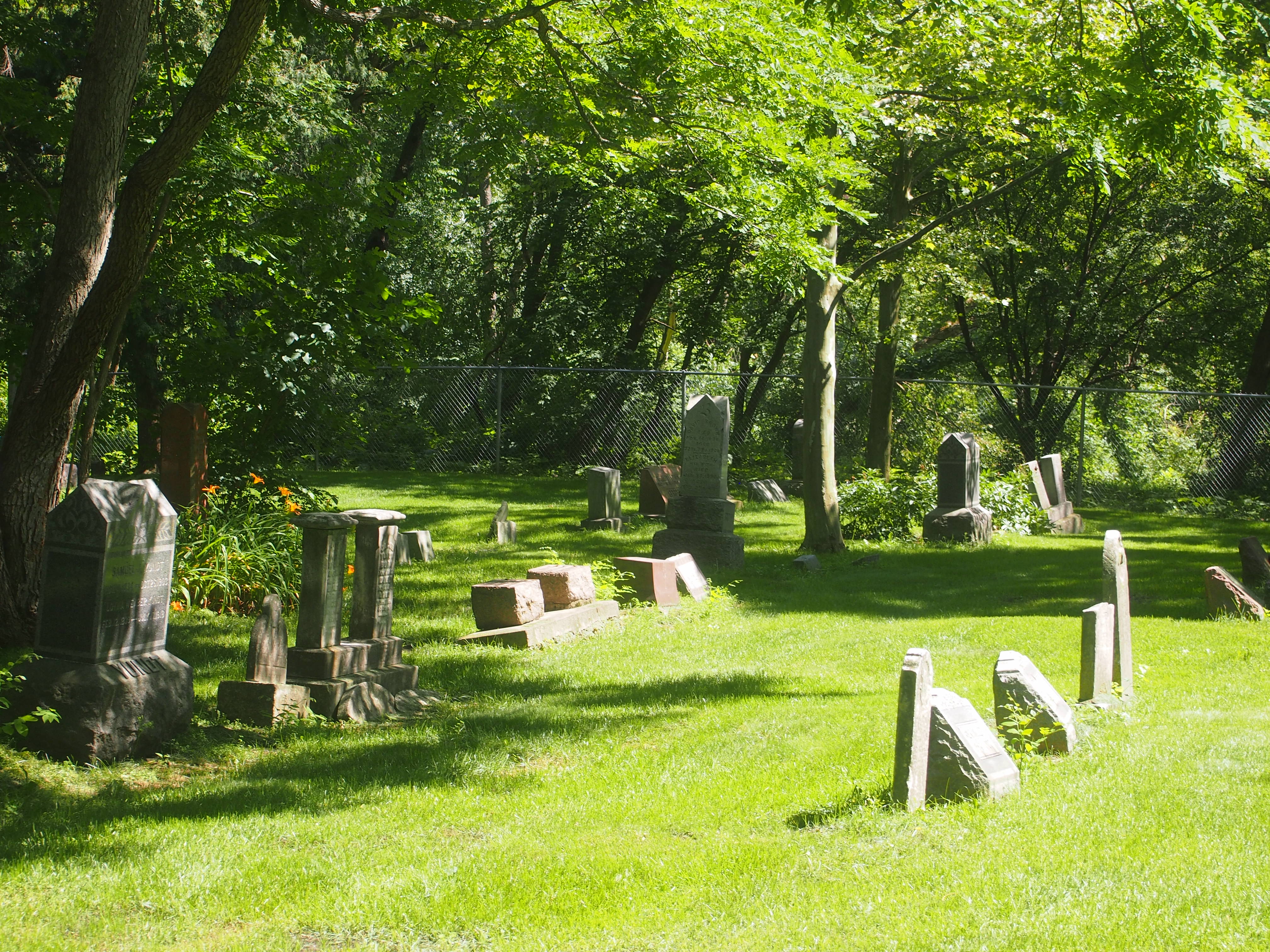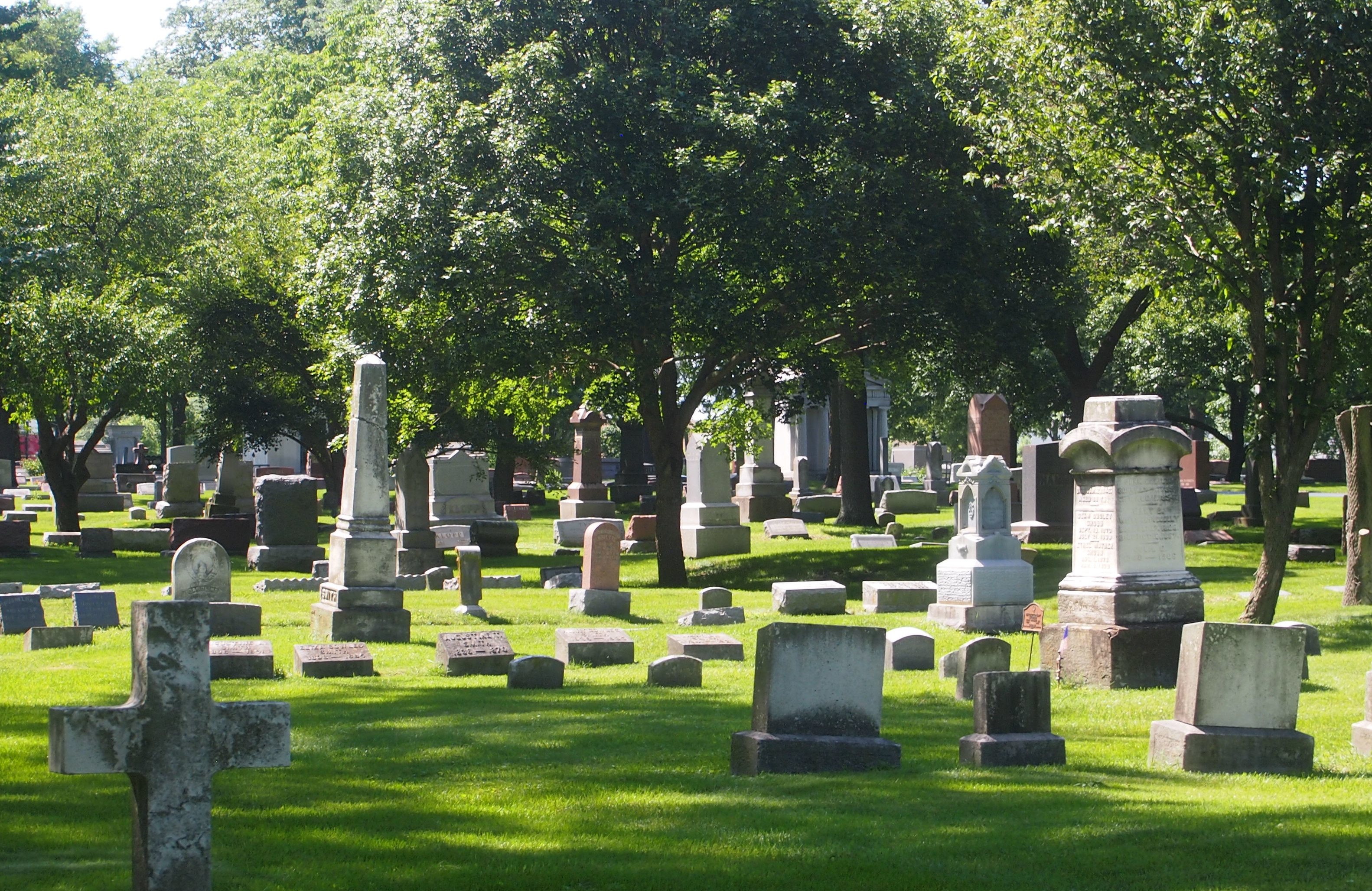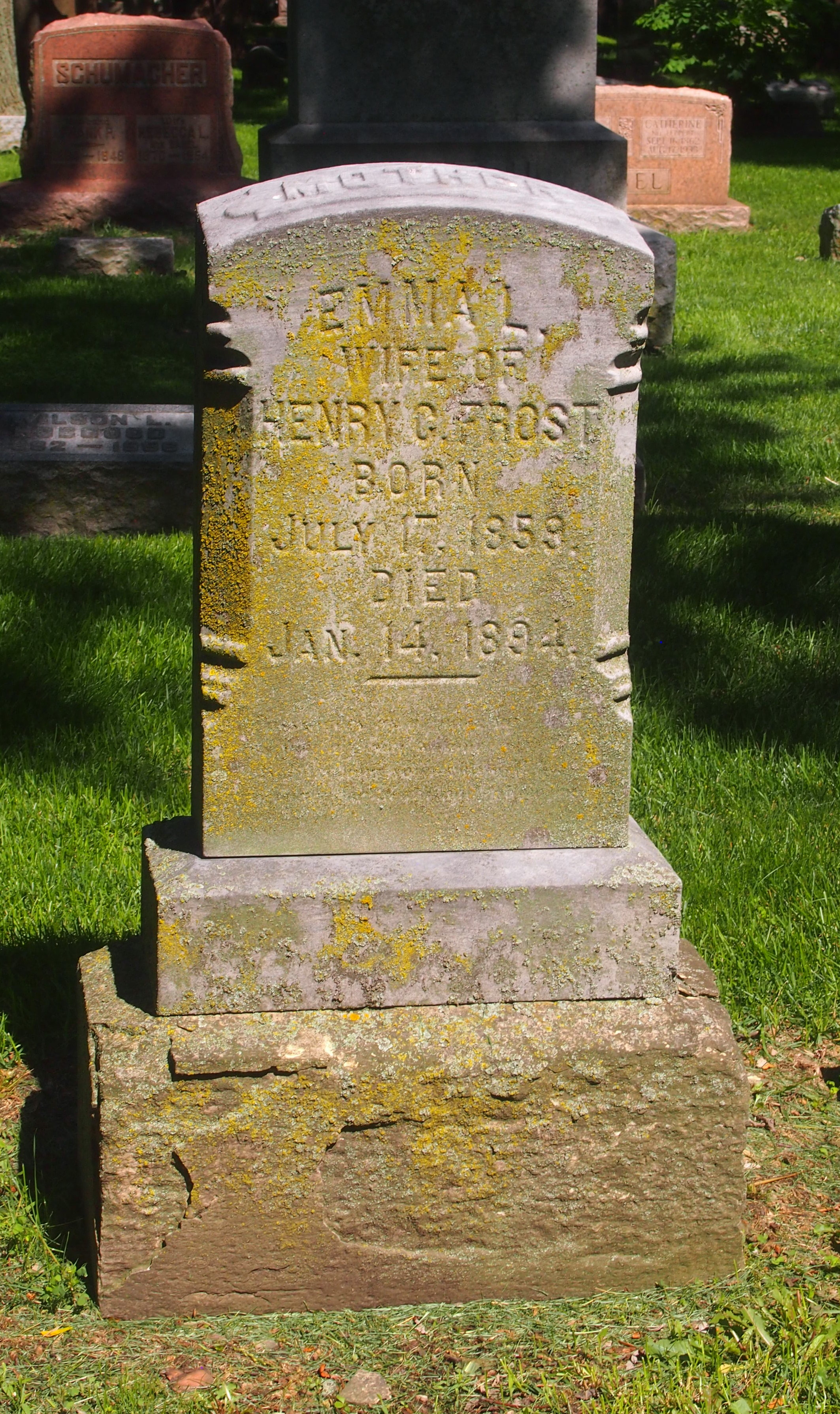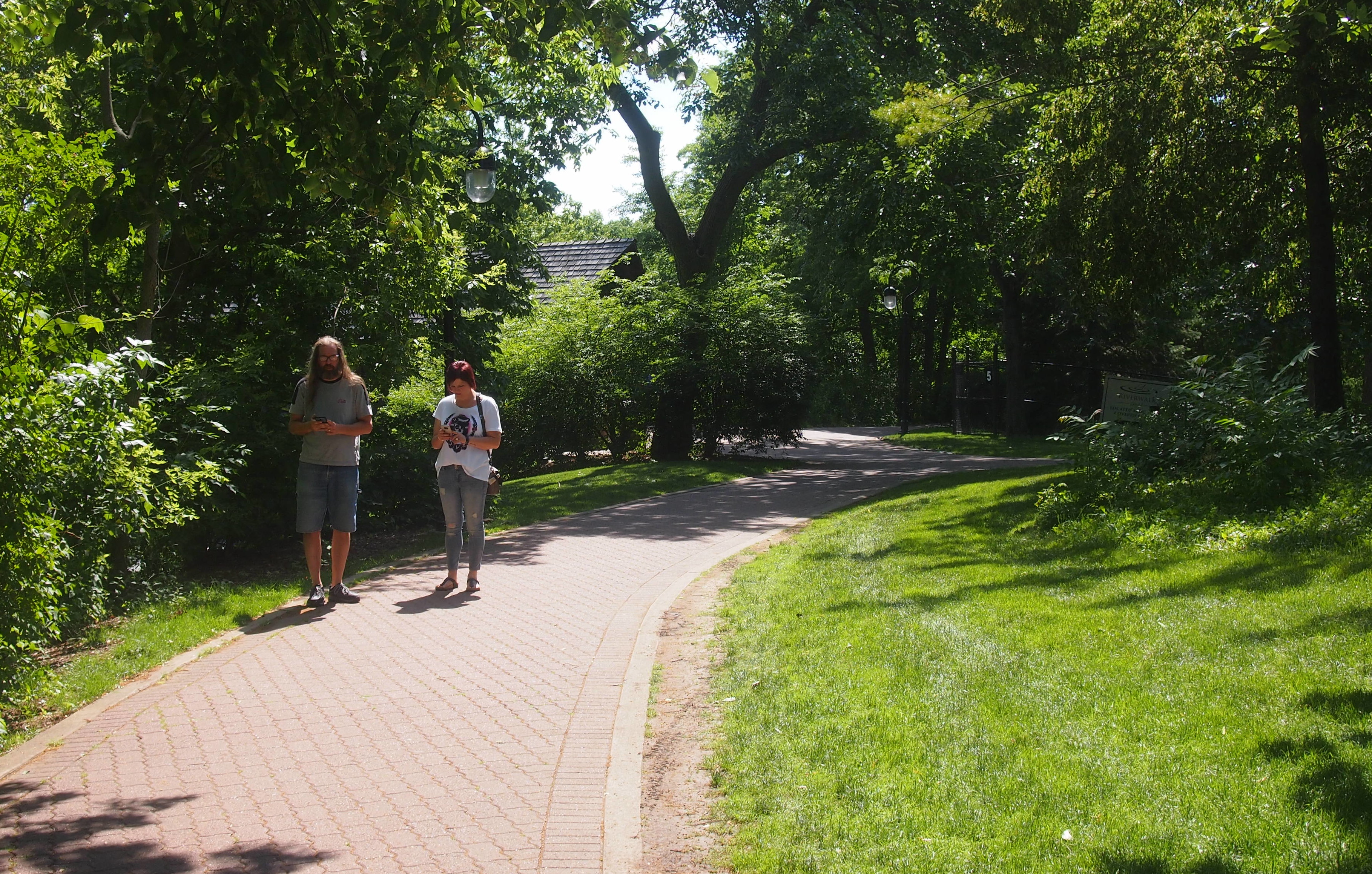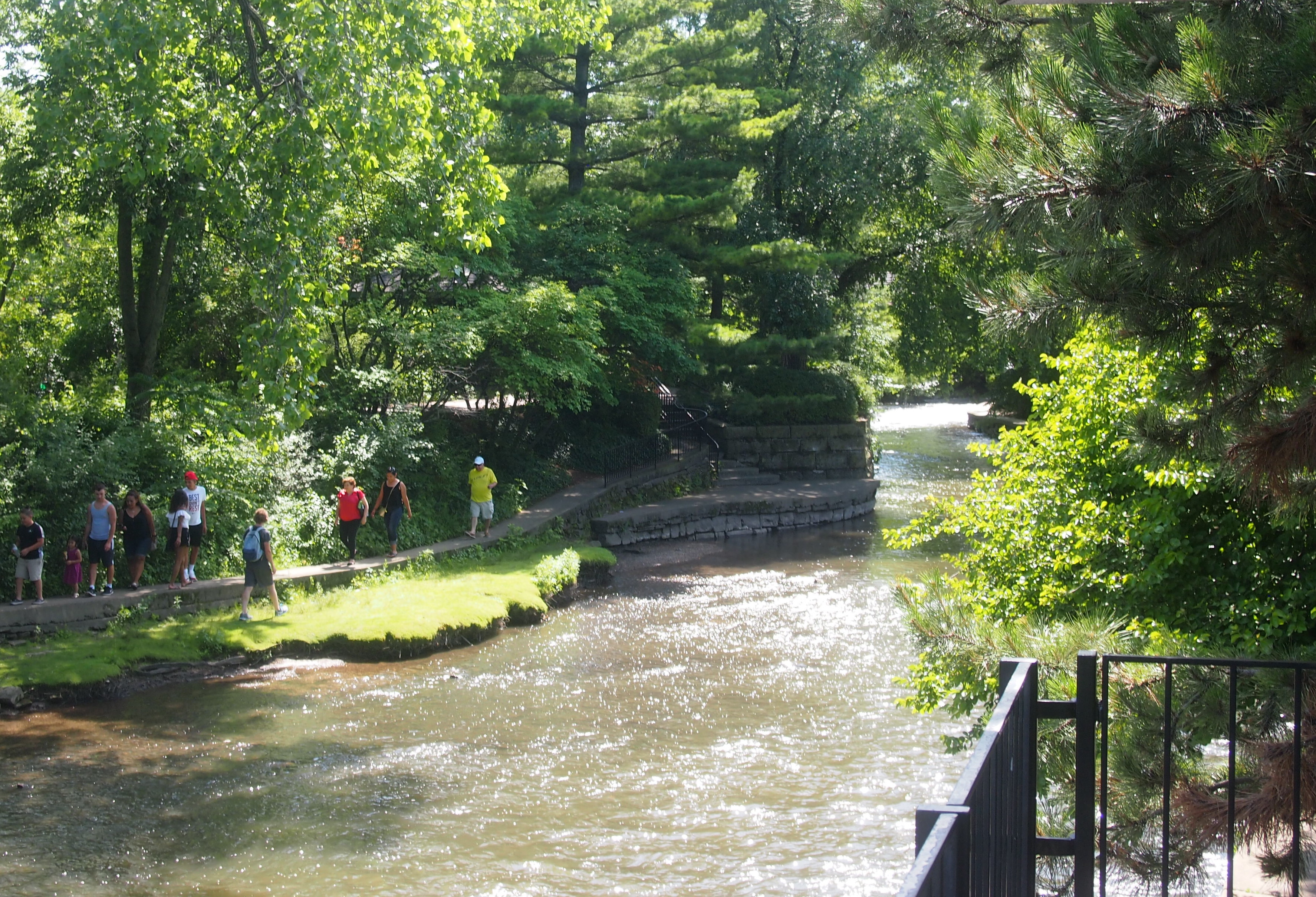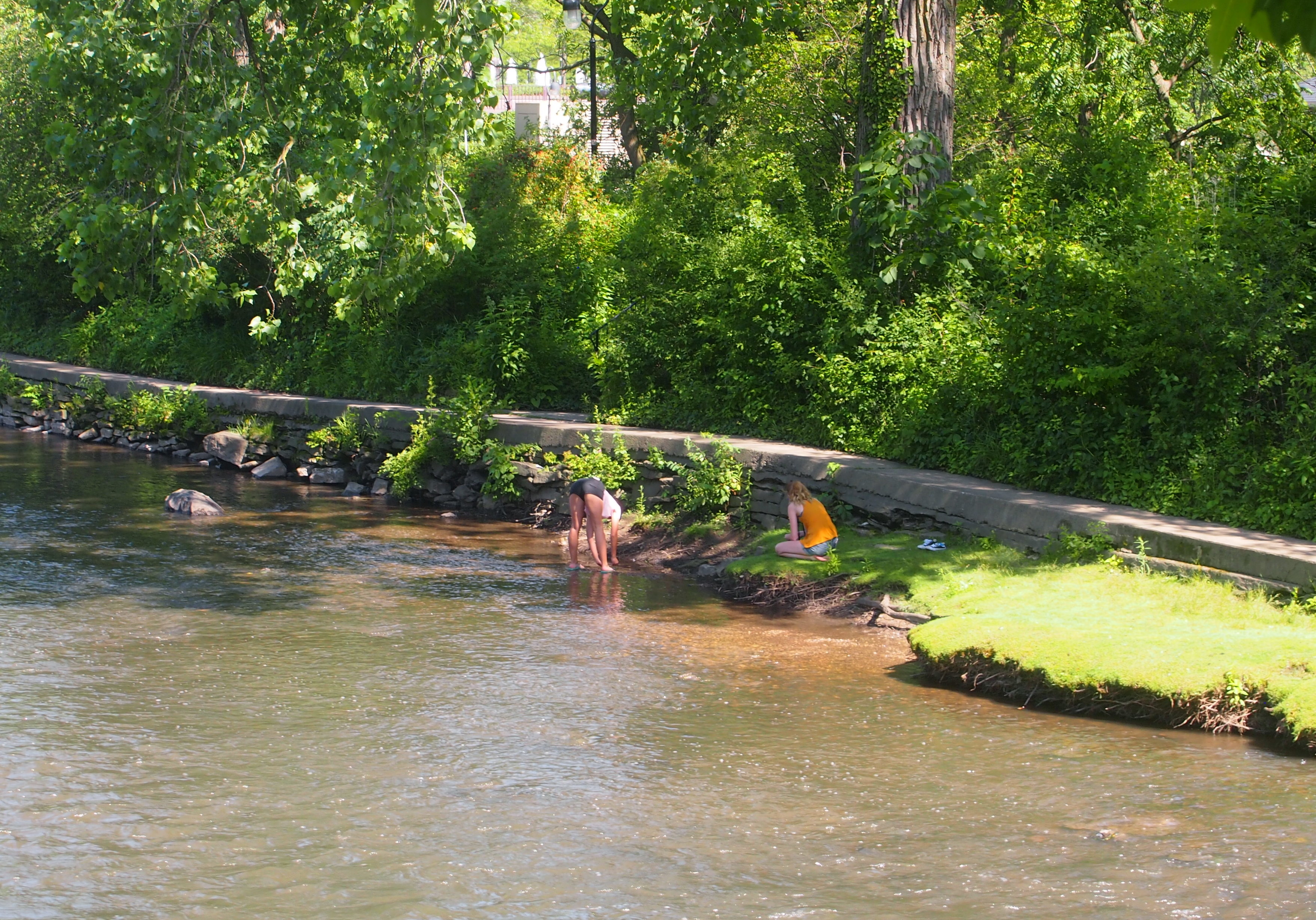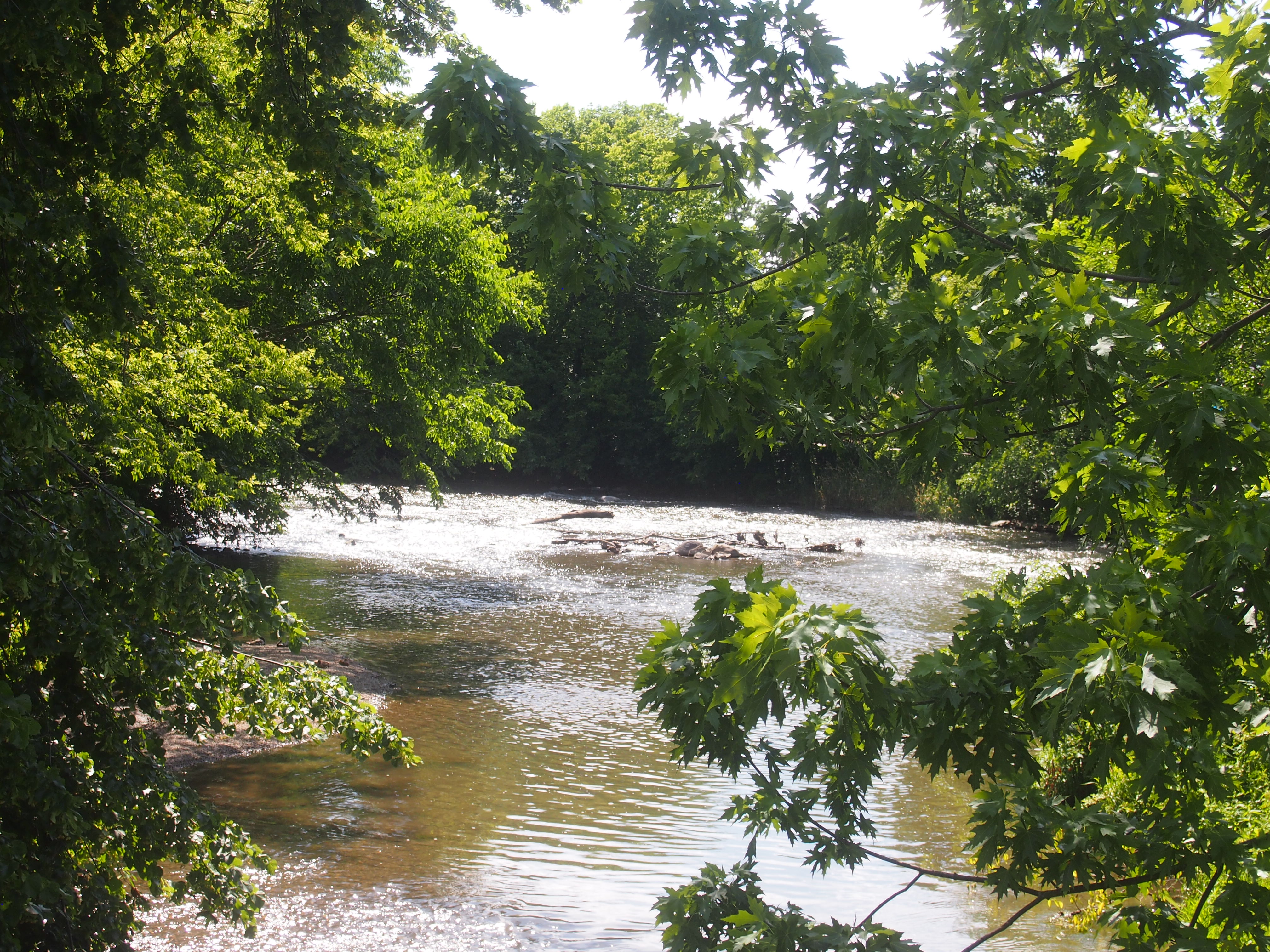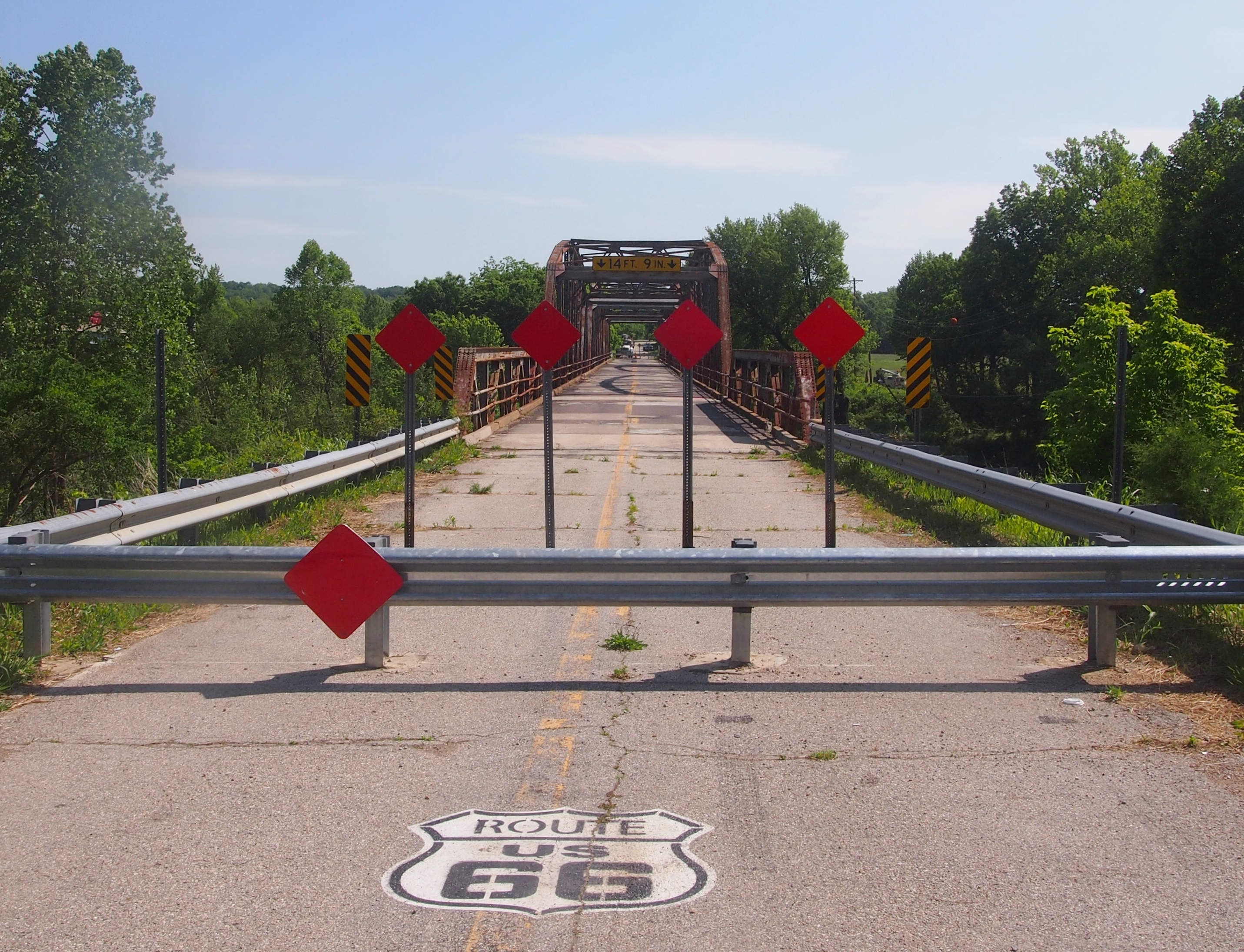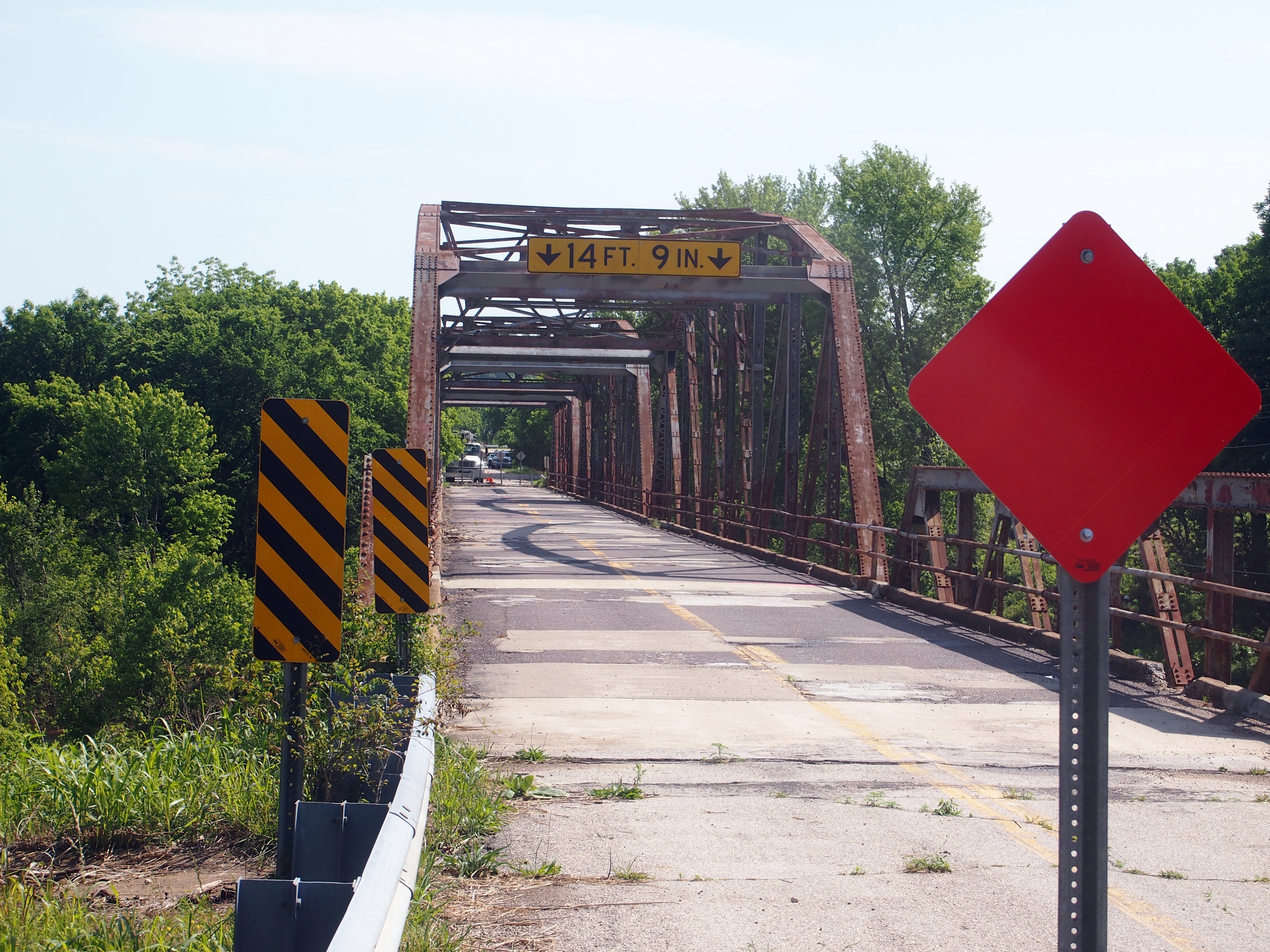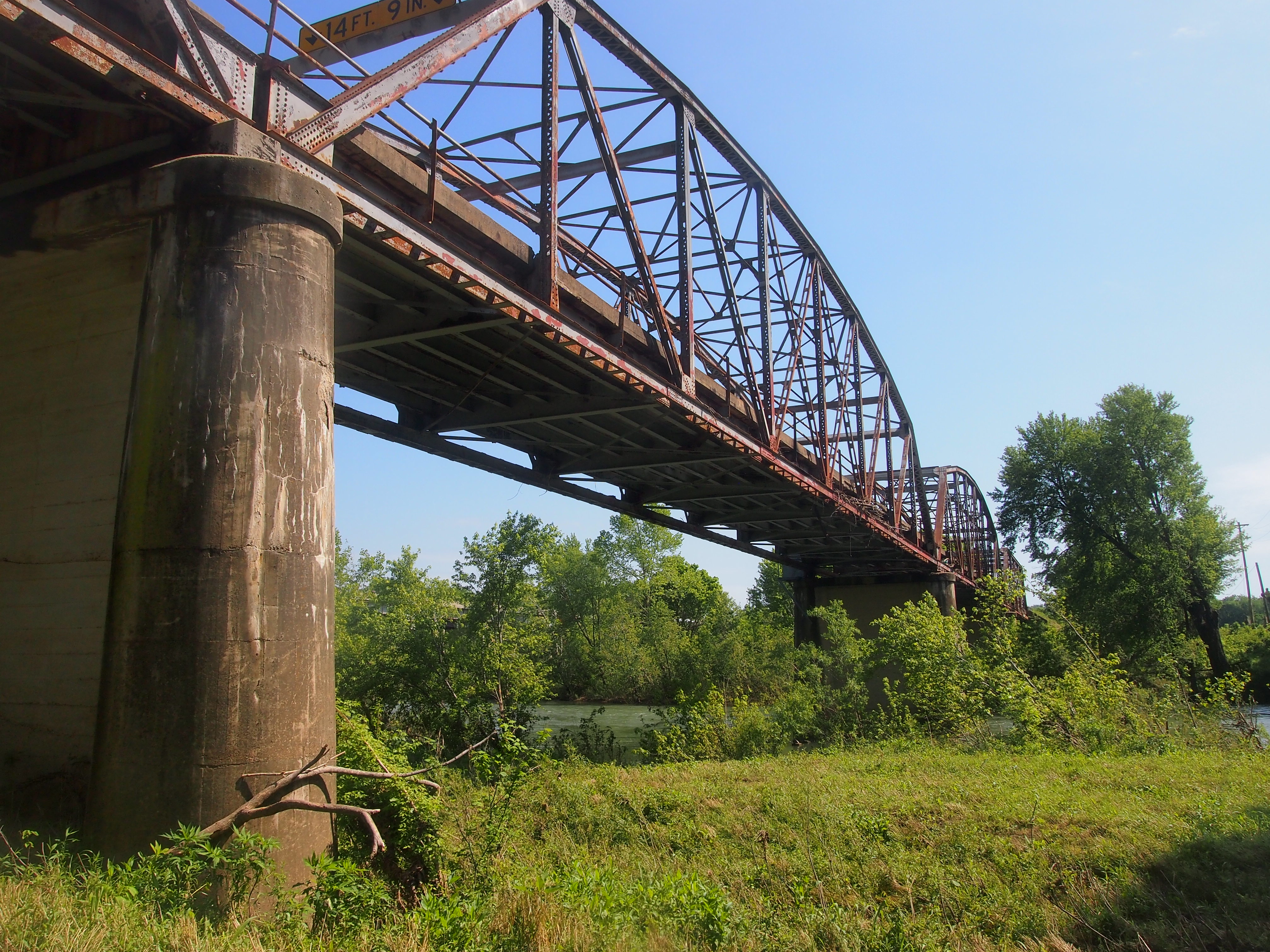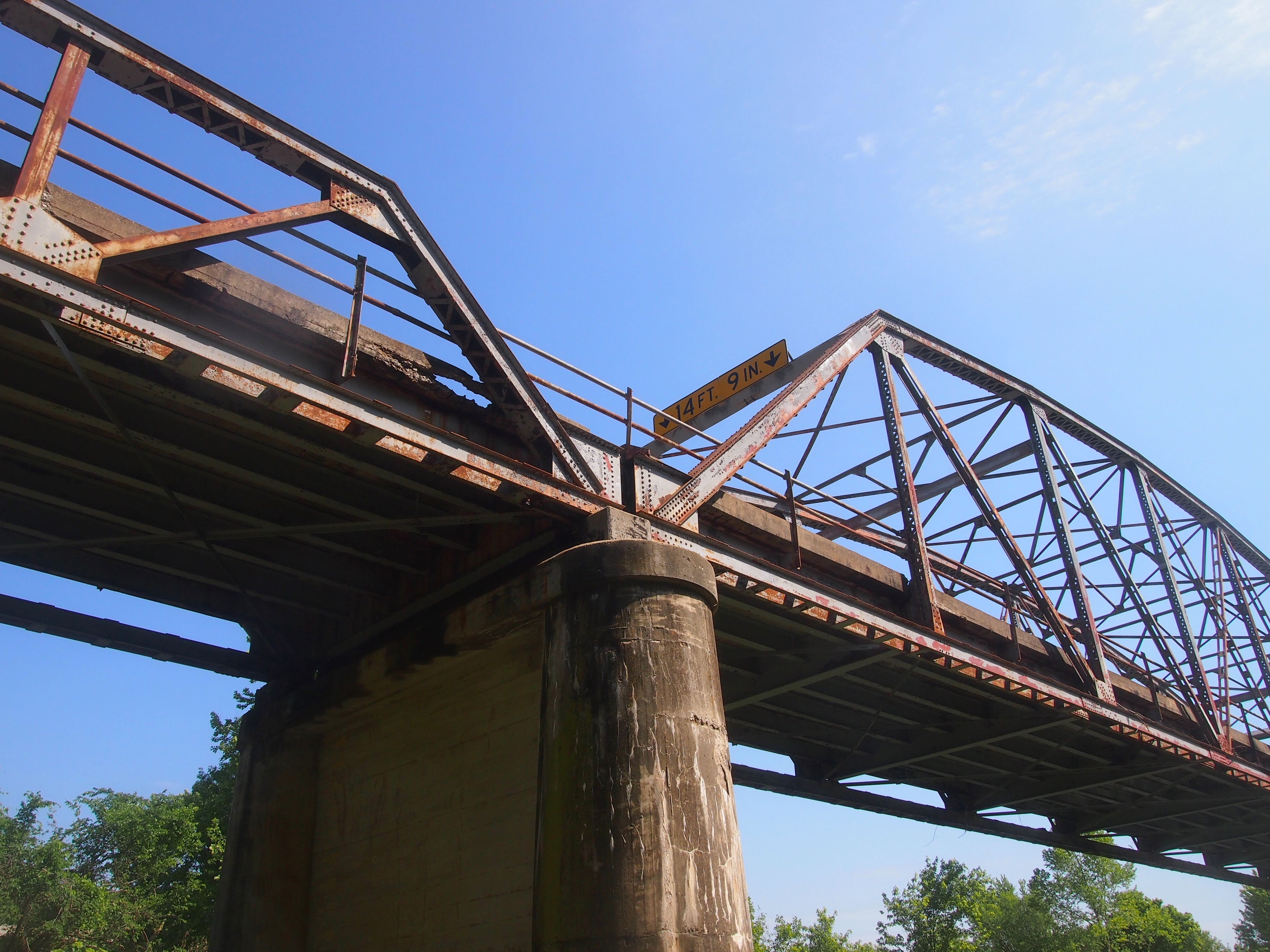When I was very young, I had a U.S. map puzzle that I put together who knows how many times, fascinated by the individual shapes of the states. Some states more than others, including Minnesota, with its rough northern border, more-or-less straight-back western border, concave eastern border and pointy southeast and especially northeast corners.
The northeast corner still holds some fascination, and for more than just the shape. There’s the lure of the North Woods, and Lake Superior is always calling. Enough to inspire a short trip. On July 27, after I finished my Friday work, we hit the road for a five-night trip to Duluth and environs.
Since reaching Duluth means crossing northwest all the way through Wisconsin, a few points in that state were part of the trip as well, especially Eau Claire, where we spent the first night at a spartan but tolerable chain motel.
From Saturday afternoon until the morning of Wednesday, August 1, we stayed at the non-chain Allyndale Motel, a notch up from spartan. It’s in west Duluth, almost at the edge of town, but actually Duluth isn’t that large, so the location wasn’t bad.
I guessed that the Allyndate dated from the golden age of independent motel development, namely the 1950s. The details were right, except no bottle opener attached to a surface somewhere in the room. Just before we left, in a talk with the owner, I was able to confirm that vintage. The first rooms dated from 1952, he said, with later additions.
Before checking into the motel that first day, we spent a short while in downtown Duluth, walking along E. Superior St., which features shops and entertainment venues, including a legitimate theater, art house cinema and a casino. Rain, which had been holding back on the way into town, started to come down hard, so we ducked into the Duluth Coffee Company Cafe long enough to wait it out over various beverages.
That evening, we took in a show at the Marshall W. Alworth Planetarium, which is part of the University of Minnesota Duluth. The recorded show, narrated by Liam Neeson, was about black holes, and then an astrophysics grad student (I think) talked about the night sky. Many planetariums don’t bother with live narration anymore, so that was refreshing.
On Sunday we drove along much of the winding and often scenic Skyline Parkway in Duluth, stopping along the route to take in the sweeping view of the city, as well its twin city of Superior, Wis., and a large stretch of Lake Superior, from the Enger Tower in the aptly named Enger Park.
There happened to be a coffee and ice cream truck in the park, so Lilly had iced coffee and Ann had ice cream. The truck showed its regional pride in the form of a Minnesota flag.
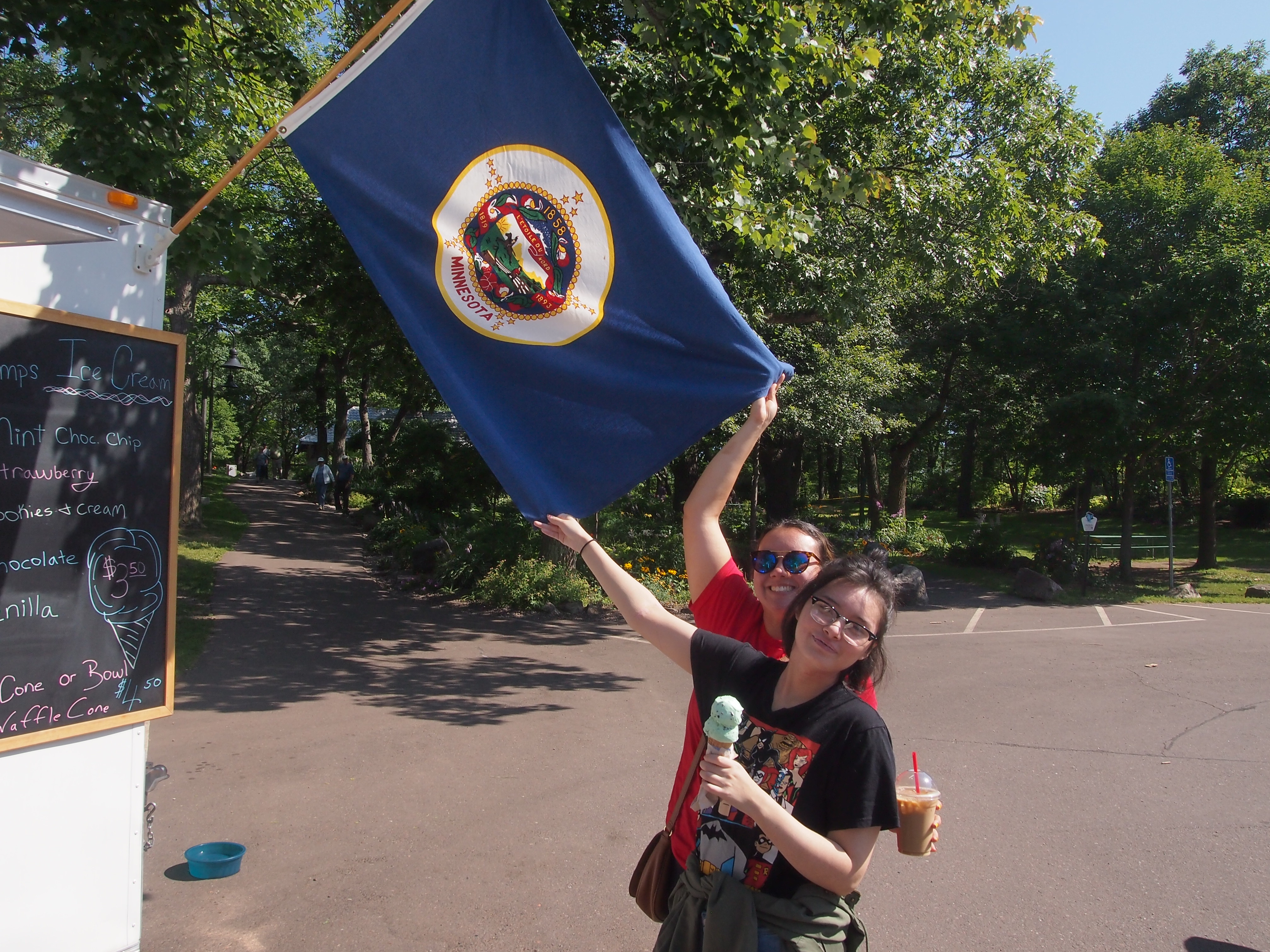
The design needs work, like many Midwest state flags. Here’s an alternative.
Late that morning we saw Duluth’s Aerial Lift Bridge up close, along with other parts of Canal Park and lakeside spots. The lofty bridge — crossing the entrance to Lake Superior from St. Louis Bay — is the Eiffel Tower of Duluth, a stand-in for the city that appears in a lot of places, including a refrigerator magnet that we brought home. (But I refuse to use the i-word.)
In the afternoon, we headed northeast from town along U.S. 61, which follows the shore of Lake Superior. That region, I discovered, is known locally as the North Shore. We made it as far as Gooseberry Falls State Park.
On Monday, July 30, we headed north, mostly via U.S. 53, to Voyageurs National Park, which is hard by the Canadian border. The trip up and back from Duluth is a little far for a single day, but ultimately seemed worth the effort. Besides, something about the symmetry of visiting Voyageurs NP and Big Bend NP during the same year appealed to me.
As the girls slept late on the last day of July, I made my way to Superior, Wis., and visited the Richard I. Bong Veterans Historical Center, a small military museum. WWII is increasingly distant, and except in Wisconsin, the memory of air ace Bong’s deeds has faded. But he had his moment.

The main event of July 31, our last day in town, was the Great Lakes Aquarium, which is in downtown Duluth, on St. Louis Bay not far from the Aerial Lift Bridge and Canal Park. The aquarium’s distinction is that it focuses on freshwater creatures.
Late that afternoon, I struck out again on my own to see one more place: Forest Hill Cemetery, which is in the hills northeast of the University of Minnesota Duluth. My kind of site, not the girls’.
On August 1, we got up early and drove home, stopping only to eat lunch in Madison. I wanted to take Lilly to Ella’s Deli, since she wasn’t with us last year when we went. But it’s closed.
Too bad. Wonder what happened to all the oddball stuff Ella’s had. Instead we found Monty’s Blue Plate Diner. Not as much whimsy on the walls as Ella’s, but the food was good.
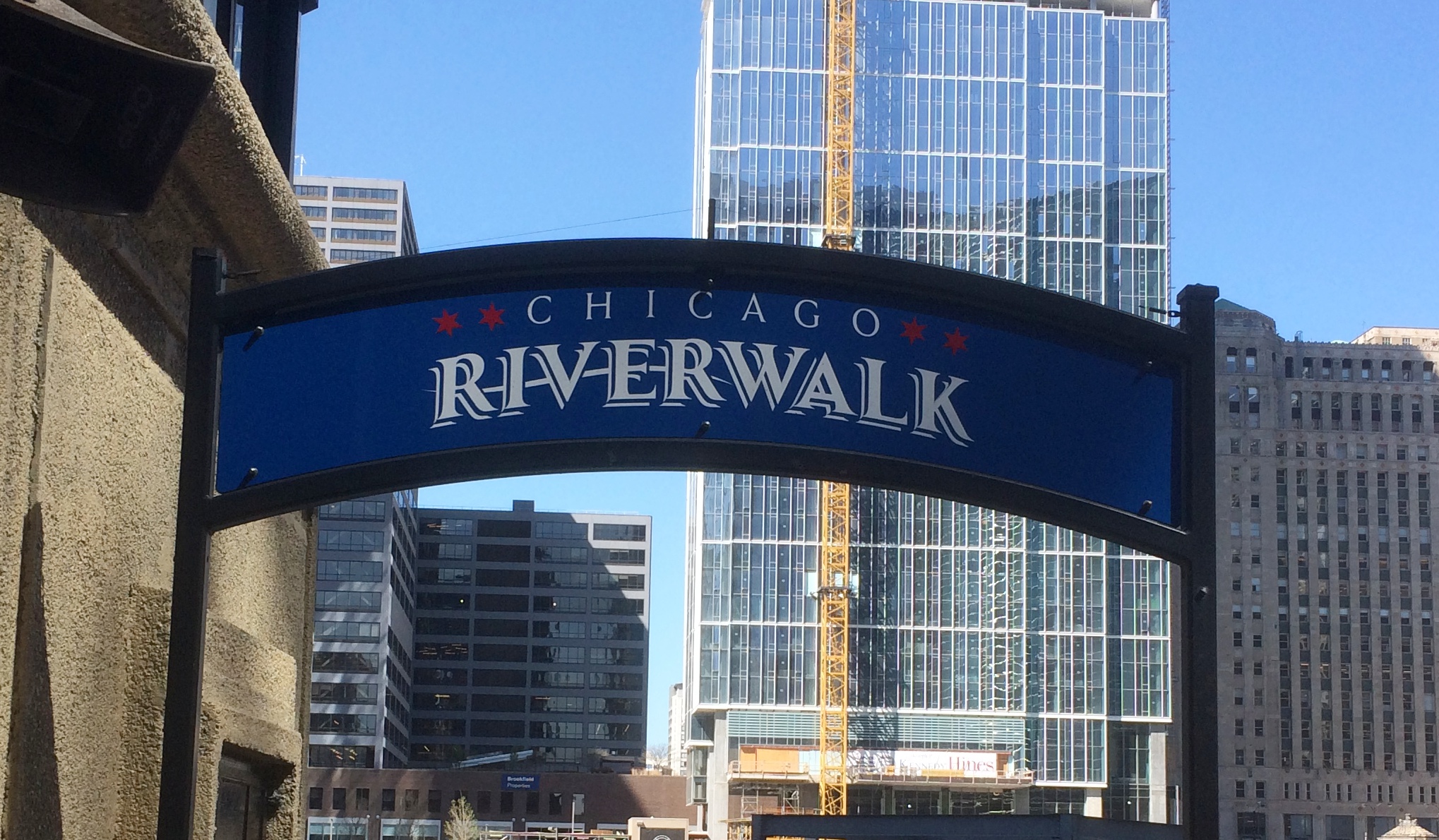 Parts of the waterfront walkway to the east were started back in 2005; the western section was only completed in 2017. The San Antonio Riverwalk, it isn’t, but Chicago has done well with what it has.
Parts of the waterfront walkway to the east were started back in 2005; the western section was only completed in 2017. The San Antonio Riverwalk, it isn’t, but Chicago has done well with what it has.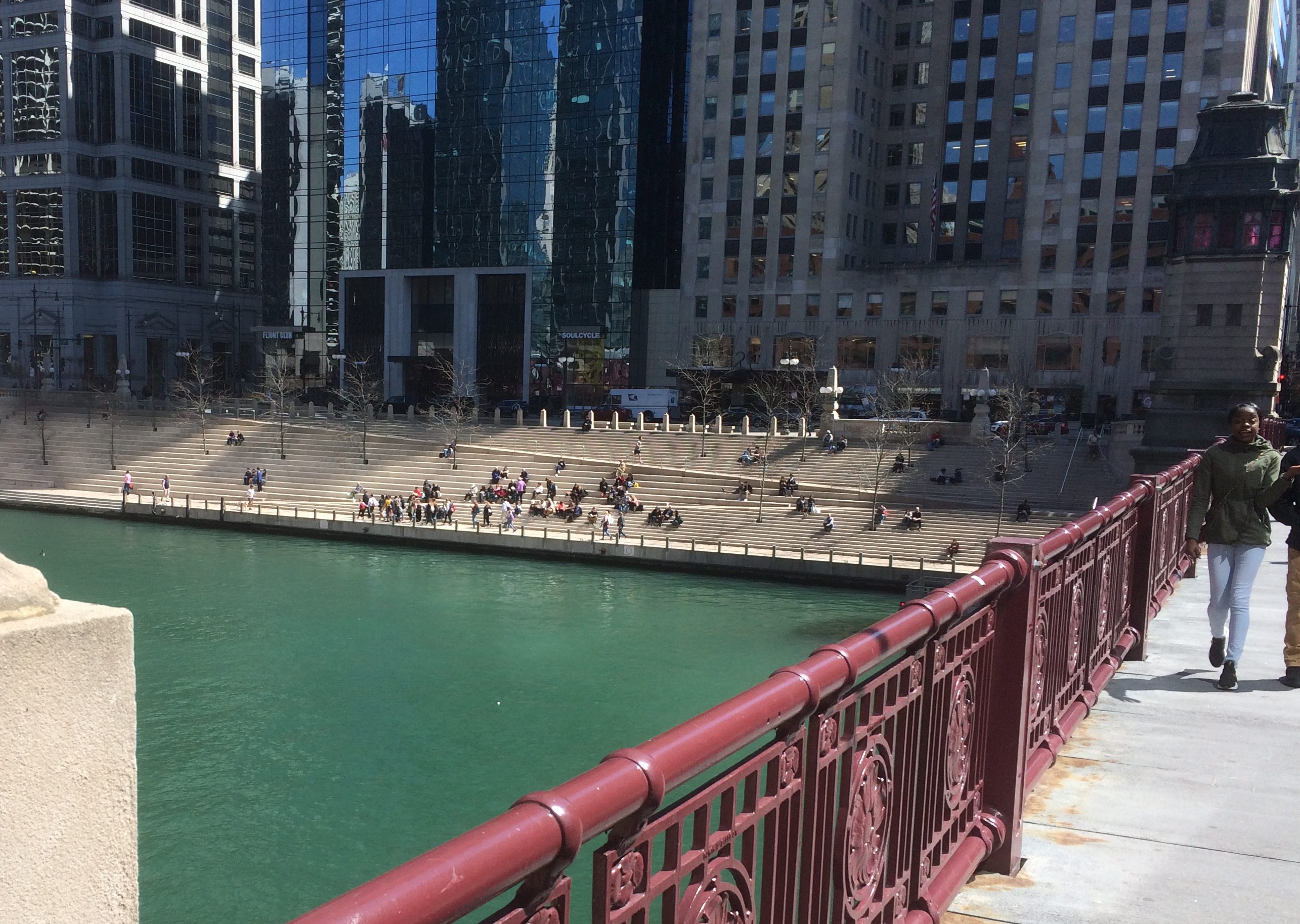 To the west of that feature is a walkway that crosses under the LaSalle St. bridge.
To the west of that feature is a walkway that crosses under the LaSalle St. bridge.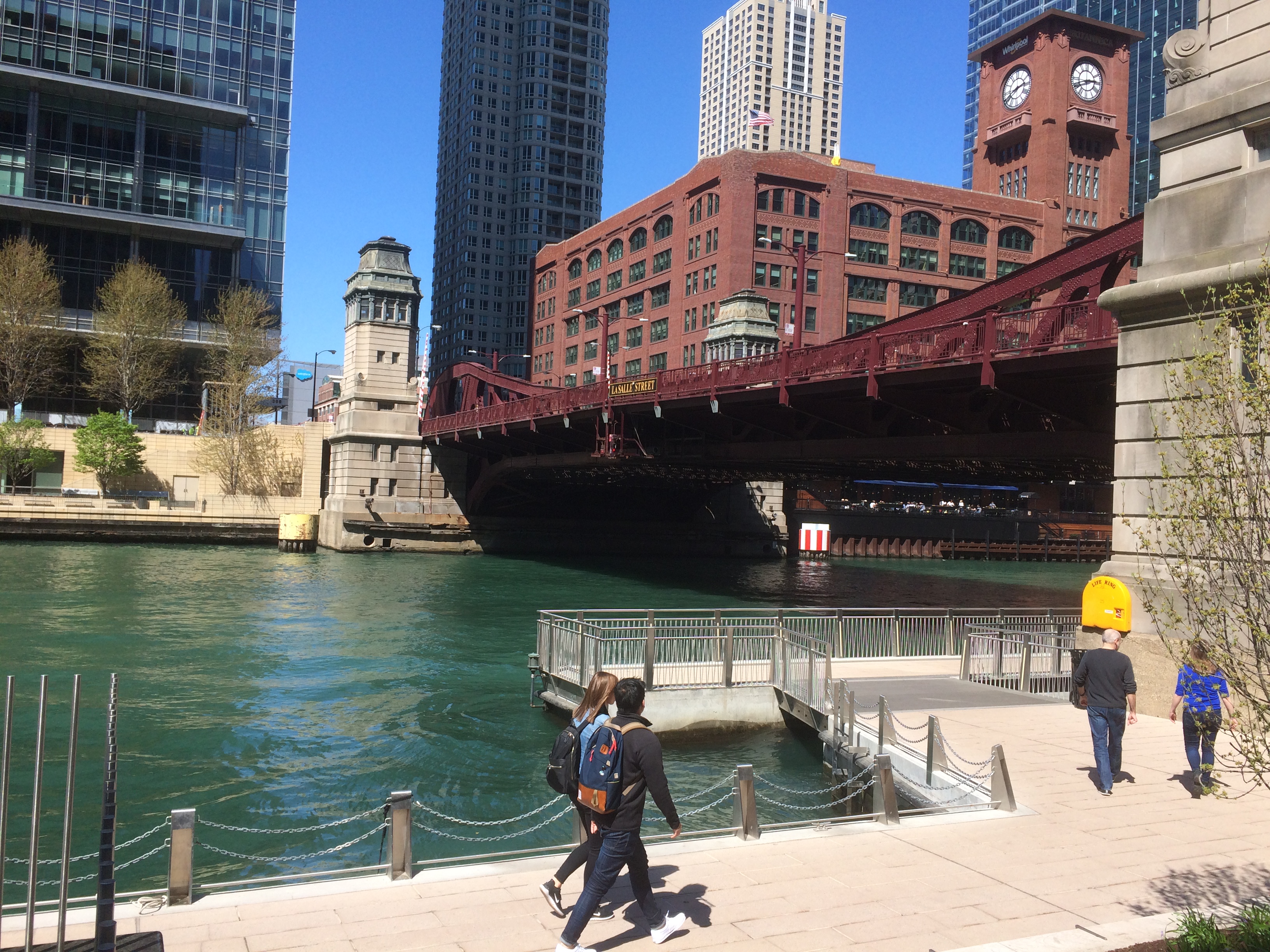 I noticed that besides building the riverwalk, the city cleaned up the underside of all the bridges you can see from the riverwalk. Once upon a time, they wore their peeling paint and rust like badges of honor.
I noticed that besides building the riverwalk, the city cleaned up the underside of all the bridges you can see from the riverwalk. Once upon a time, they wore their peeling paint and rust like badges of honor.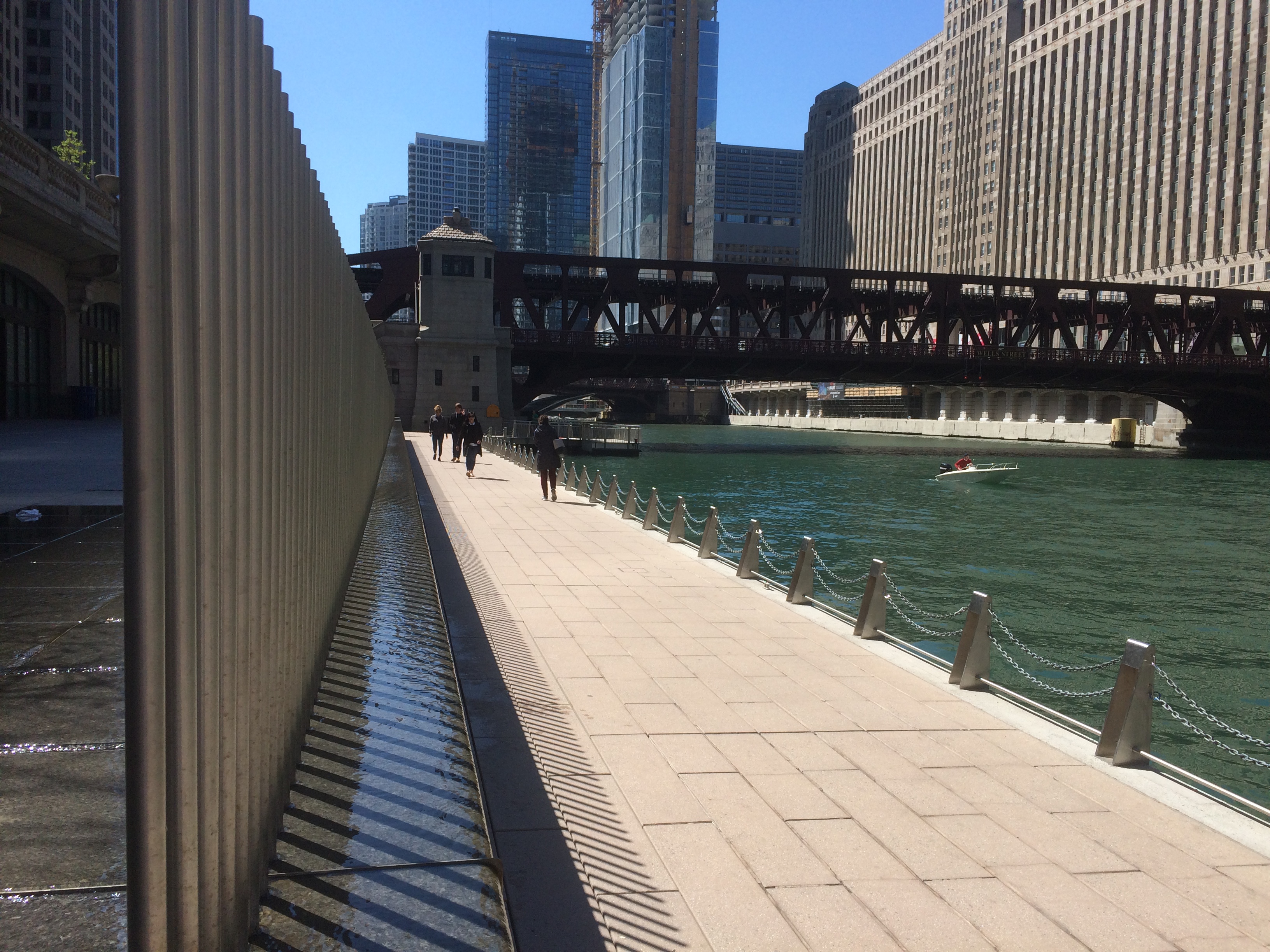 On the west side of the Wells St. bridge is a fine view of that structure.
On the west side of the Wells St. bridge is a fine view of that structure. The afternoon sun in late April left a curious trace on the 300 N. LaSalle building, which rises above the Wells St. bridge.
The afternoon sun in late April left a curious trace on the 300 N. LaSalle building, which rises above the Wells St. bridge.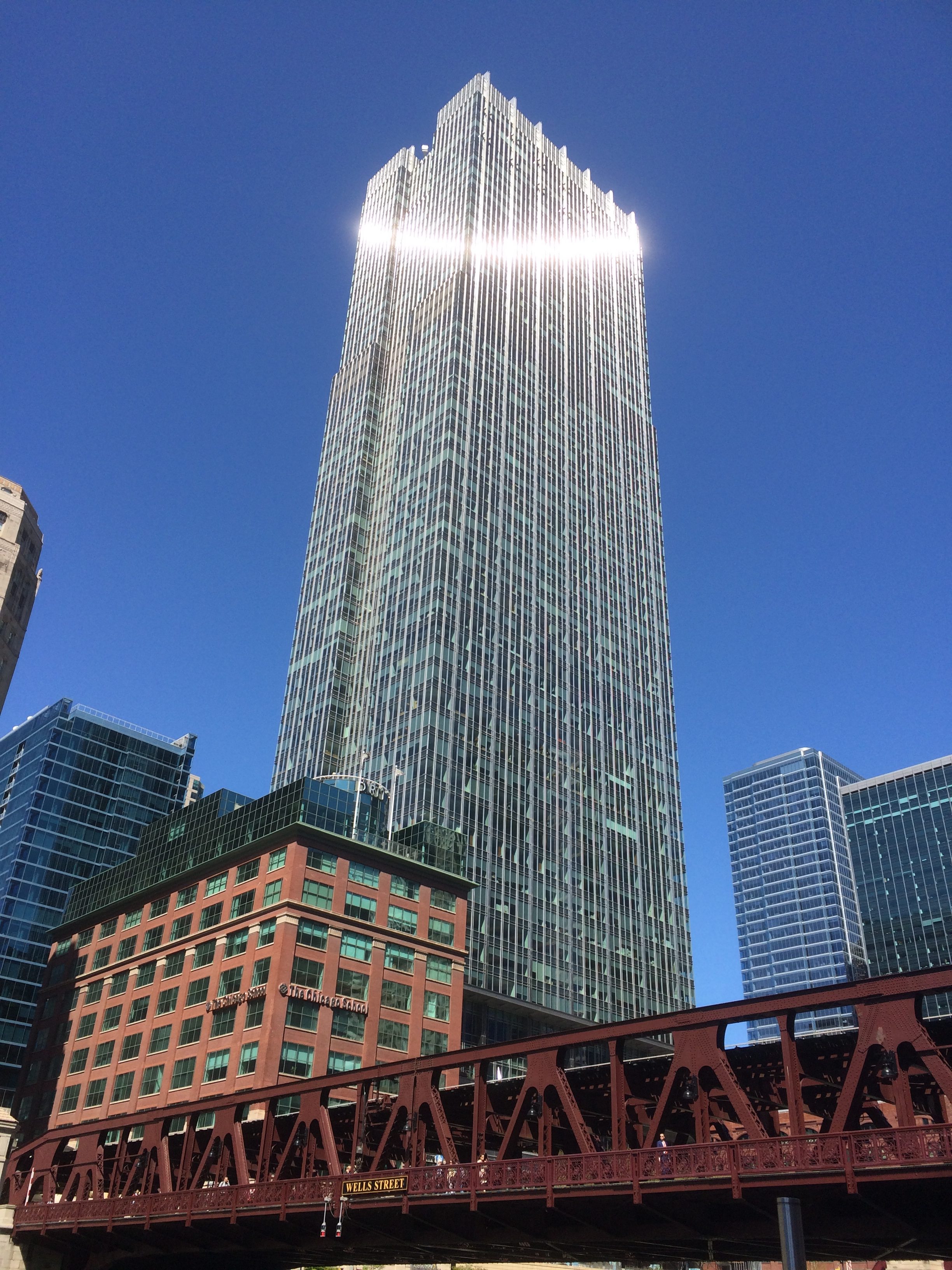 Further to the west of Wells St.
Further to the west of Wells St.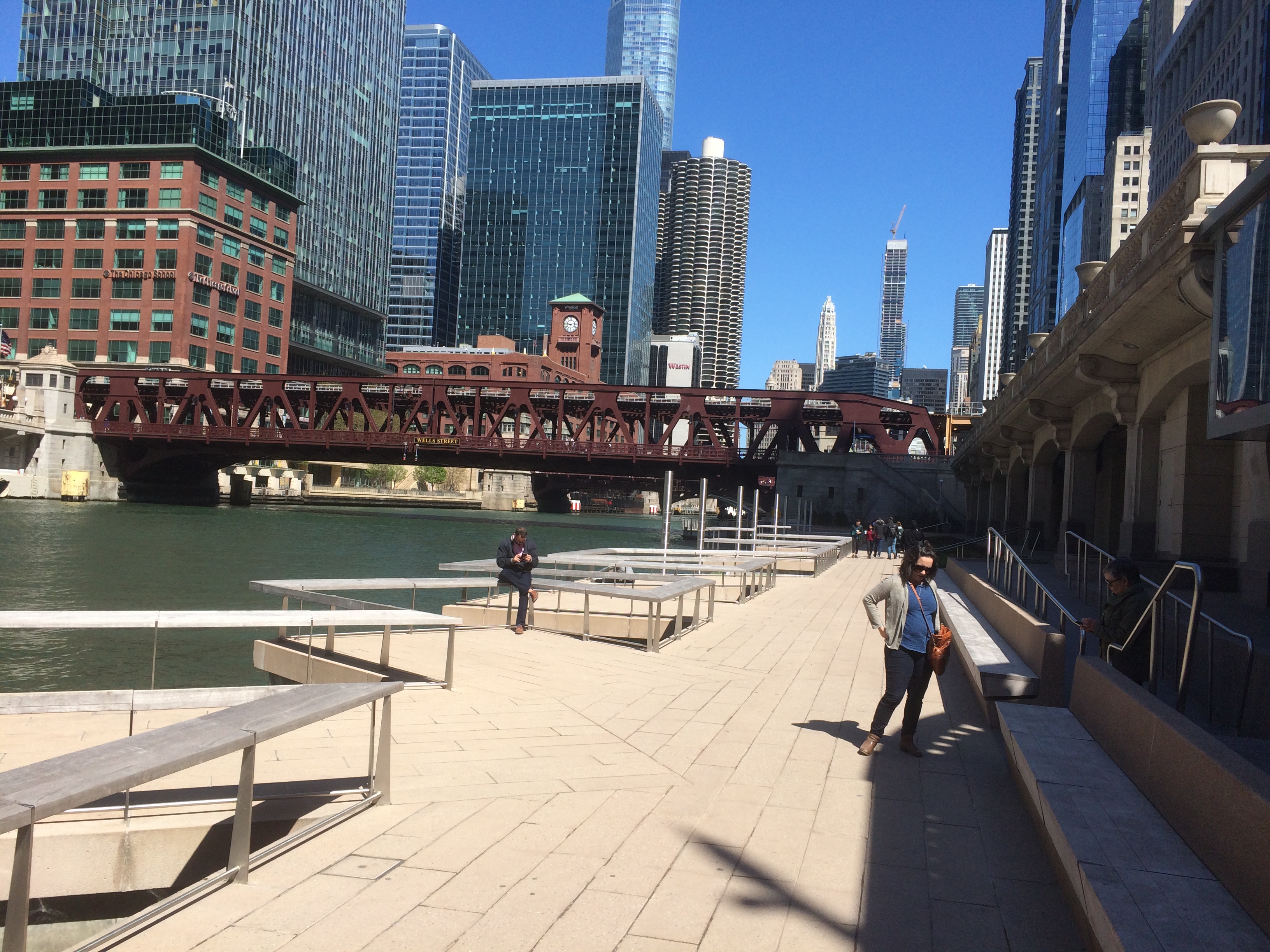 This section, west of Wells, sports floating wetland gardens. Or maybe you can call them the Floating Gardens of Chicago. But what the city really needs are hanging gardens. Maybe they can go next to the Obama Library.
This section, west of Wells, sports floating wetland gardens. Or maybe you can call them the Floating Gardens of Chicago. But what the city really needs are hanging gardens. Maybe they can go next to the Obama Library. From there, the path crosses under the Franklin St. bridge, and goes to its end at Lake St., with the Merchandise Mart dominating the view. Workmen were busy installing turf on the small slope to the right (in this pic) of the sidewalk.
From there, the path crosses under the Franklin St. bridge, and goes to its end at Lake St., with the Merchandise Mart dominating the view. Workmen were busy installing turf on the small slope to the right (in this pic) of the sidewalk.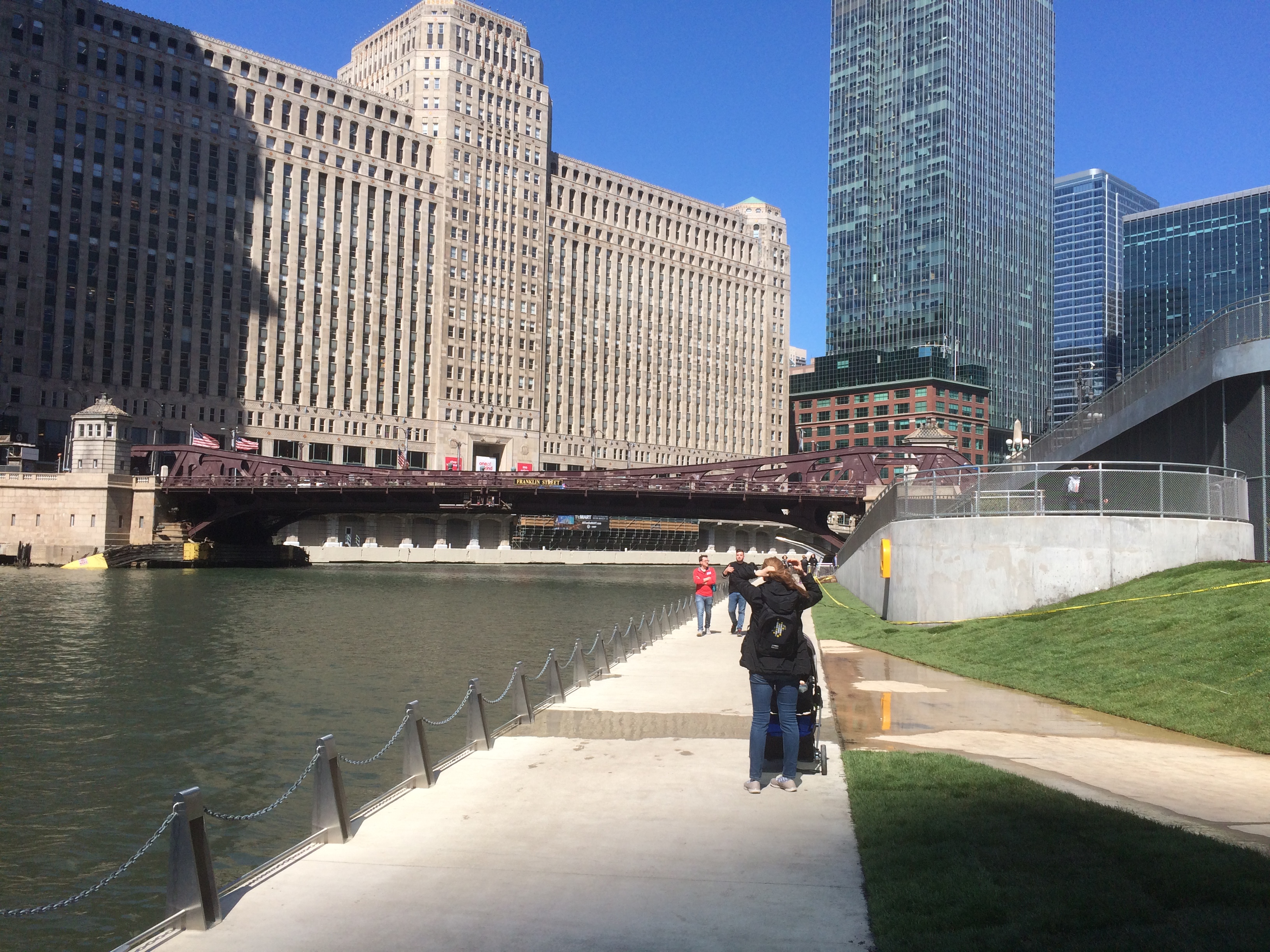 All the while, you can see boats plying the river.
All the while, you can see boats plying the river.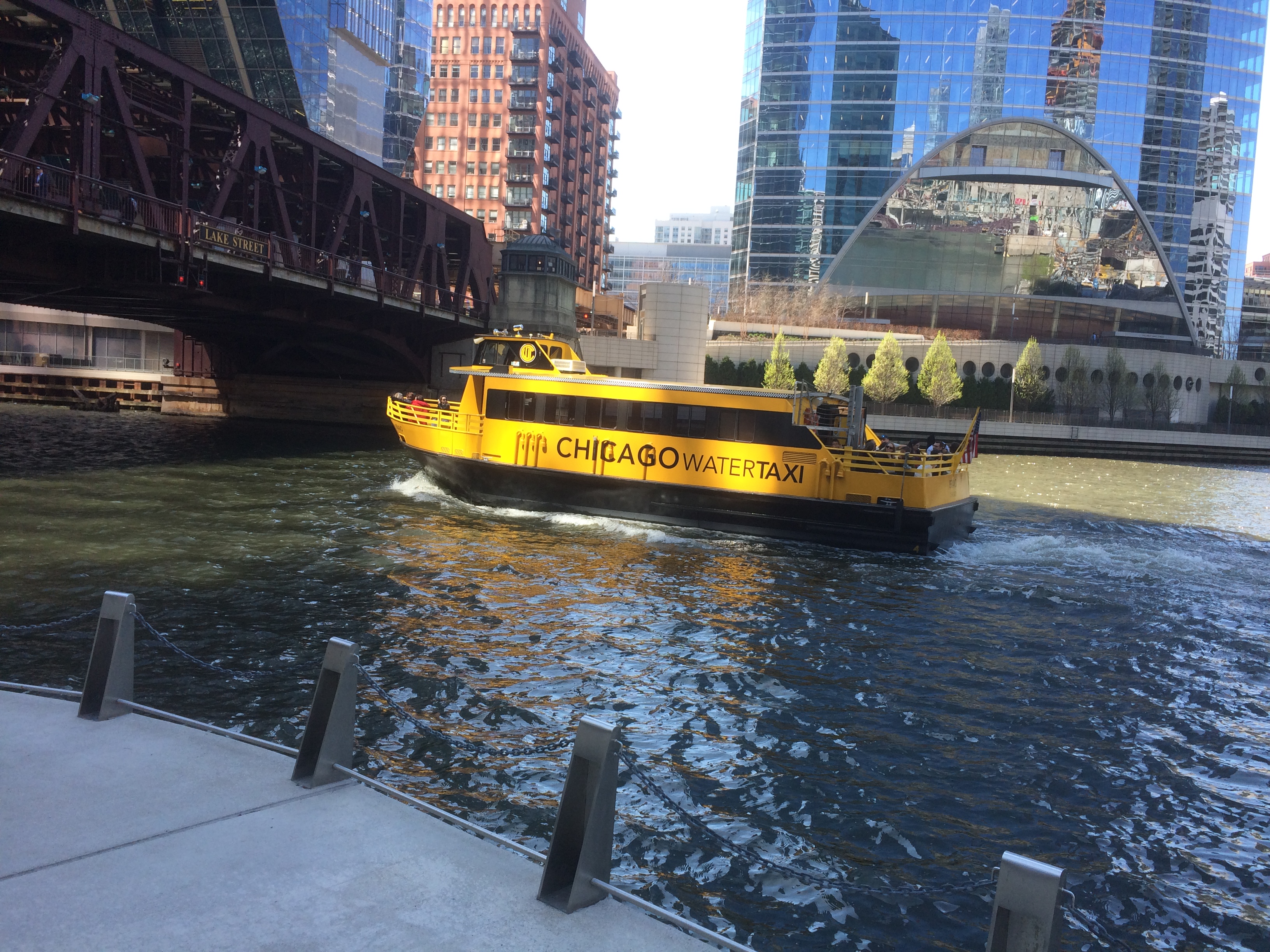
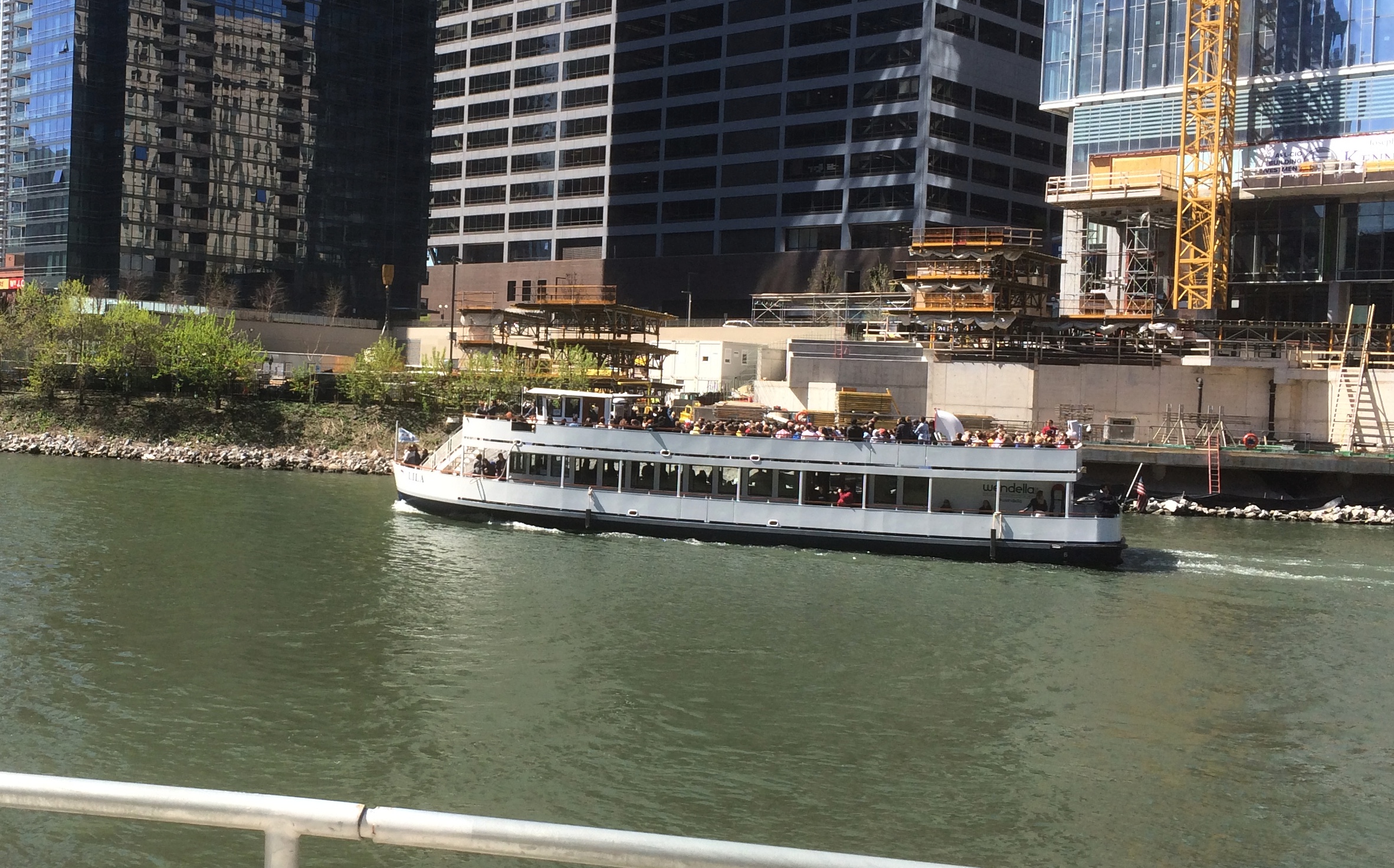 Interesting that yellow means taxi, even on the water. I recognized the vessel in the second pic. The good tourist ship Lila passing Wolf Point.
Interesting that yellow means taxi, even on the water. I recognized the vessel in the second pic. The good tourist ship Lila passing Wolf Point. This aircraft isn’t the one Bong flew. While he was stateside, it crashed while another pilot was flying it. The Army took delivery of the one on display in July 1945, after Bong had been ordered to quit flying combat missions. The Richard I. Bong American Legion Post of Poplar, Wis., acquired the plane from the Air Force in 1949, and it was on display in that town for some decades.
This aircraft isn’t the one Bong flew. While he was stateside, it crashed while another pilot was flying it. The Army took delivery of the one on display in July 1945, after Bong had been ordered to quit flying combat missions. The Richard I. Bong American Legion Post of Poplar, Wis., acquired the plane from the Air Force in 1949, and it was on display in that town for some decades.